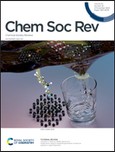
V. K. Sharma, X. Ma and R. Zboril, "Single atom catalyst-mediated generation of reactive species in water treatment," CHEMICAL SOCIETY REVIEWS, vol. 52, iss. 22, pp. 7673-7686, 2023.
DOI: 10.1039/d3cs00627a, IF = 60.615
Abstract: Water is one of the most essential components in the sustainable development goals (SDGs) of the United Nations. With worsening global water scarcity, especially in some developing countries, water reuse is gaining increasing acceptance. A key challenge in water treatment by conventional treatment processes is the difficulty of treating low concentrations of pollutants (micromolar to nanomolar) in the presence of much higher levels of inorganic ions and natural organic matter (NOM) in water (or real water matrices). Advanced oxidation processes (AOPs) have emerged as an attractive treatment technology that generates reactive species with high redox potentials (E0) (e.g., hydroxyl radical (HO˙), singlet oxygen (1O2), sulfate radical (SO4˙−), and high-valent metals like iron(IV) (Fe(IV)), copper(III) (Cu(III)), and cobalt(IV) (Co(IV))). The use of single atom catalysts (SACs) in AOPs and water treatment technologies has appeared only recently. This review introduces the application of SACs in the activation of hydrogen peroxide and persulfate to produce reactive species in treatment processes. A significant part of the review is devoted to the mechanistic aspects of traditional AOPs and their comparison with those triggered by SACs. The radical species, SO4˙− and HO˙, which are produced in both traditional and SACs-activated AOPs, have higher redox potentials than non-radical species, 1O2 and high-valent metal species. However, SO4˙− and HO˙ radicals are non-selective and easily affected by components of water while non-radicals resist the impact of such constituents in water. Significantly, SACs with varying coordination environments and structures can be tuned to exclusively generate non-radical species to treat water with a complex matrix. Almost no influence of chloride, carbonate, phosphate, and NOM was observed on the performance of SACs in treating pollutants in water when nonradical species dominate. Therefore, the appropriately designed SACs represent game-changers in purifying water vs. AOPs with high efficiency and minimal interference from constituents of polluted water to meet the goals of water sustainability.
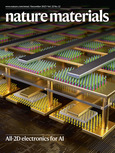
A. B. Tesler, S. Kolle, L. H. Prado, I. Thievessen, D. Böhringer, M. Backholm, B. Karunakaran, H. A. Nurmi, M. Latikka, L. Fischer, S. Stafslien, Z. M. Cenev, J. V. I. Timonen, M. Bruns, A. Mazare, U. Lohbauer, S. Virtanen, B. Fabry, P. Schmuki, R. H. A. Ras, J. Aizenberg and W. H. Goldmann, "Long-term stability of aerophilic metallic surfaces underwater," NATURE MATERIALS, vol. 22, iss. 12, pp. 1548-1555, 2023.
DOI: 10.1038/s41563-023-01670-6, IF = 47.656
Abstract: Aerophilic surfaces immersed underwater trap films of air known as plastrons. Plastrons have typically been considered impractical for underwater engineering applications due to their metastable performance. Here, we describe aerophilic titanium alloy (Ti) surfaces with extended plastron lifetimes that are conserved for months underwater. Long-term stability is achieved by the formation of highly rough hierarchically structured surfaces via electrochemical anodization combined with a low-surface-energy coating produced by a fluorinated surfactant. Aerophilic Ti surfaces drastically reduce blood adhesion and, when submerged in water, prevent adhesion of bacteria and marine organisms such as barnacles and mussels. Overall, we demonstrate a general strategy to achieve the long-term stability of plastrons on aerophilic surfaces for previously unattainable underwater applications.
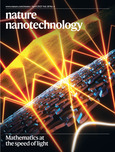
A. Cheruvathoor Poulose, G. Zoppellaro, I. Konidakis, E. Serpetzoglou, E. Stratakis, O. Tomanec, M. Beller, A. Bakandritsos and R. Zbořil, "Reply to: Primary role of photothermal heating in light-driven reduction of nitroarenes," NATURE NANOTECHNOLOGY, vol. 18, iss. 4, pp. 327-328, 2023.
DOI: 10.1038/s41565-023-01353-y, IF = 40.523
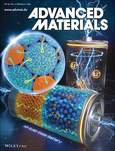
N. Denisov, S. Qin, J. Will, B. N. Vasiljevic, N. V. Skorodumova, I. A. Pašti, B. B. Sarma, B. Osuagwu, T. Yokosawa, J. Voss, J. Wirth, E. Spiecker and P. Schmuki, "Light‐Induced Agglomeration of Single‐Atom Platinum in Photocatalysis," ADVANCED MATERIALS, vol. 35, iss. 5, pp. 202206569, 2023.
DOI: 10.1002/adma.202206569, IF = 32.086
Abstract: With recent advances in the field of single-atoms (SAs) used in photocatalysis, an unprecedented performance of atomically dispersed co-catalysts has been achieved. However, the stability and agglomeration of SA co-catalysts on the semiconductor surface may represent a critical issue in potential applications. Here, the photoinduced destabilization of Pt SAs on the benchmark photocatalyst, TiO2, is described. In aqueous solutions within illumination timescales ranging from few minutes to several hours, light-induced agglomeration of Pt SAs to ensembles (dimers, multimers) and finally nanoparticles takes place. The kinetics critically depends on the presence of sacrificial hole scavengers and the used light intensity. Density-functional theory calculations attribute the light induced destabilization of the SA Pt species to binding of surface-coordinated Pt with solution-hydrogen (adsorbed H atoms), which consequently weakens the Pt SA bonding to the TiO2 surface. Despite the gradual aggregation of Pt SAs into surface clusters and their overall reduction to metallic state, which involves >90% of Pt SAs, the overall photocatalytic H2 evolution remains virtually unaffected.
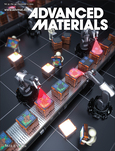
J. V. Vaghasiya, C. C. Mayorga‐Martinez, K. K. Sonigara, P. Lazar and M. Pumera, "Multi‐Sensing Platform Based on 2D Monoelement Germanane," ADVANCED MATERIALS, vol. 35, iss. 44, pp. 2304694, 2023.
DOI: 10.1002/adma.202304694, IF = 32.086
Abstract: Covalently functionalized germanane is a novel type of fluorescent probe that can be employed in material science and analytical sensing. Here, a fluorometric sensing platform based on methyl-functionalized germanane (CH3Ge) is developed for gas (humidity and ammonia) sensing, pH (1–9) sensing, and anti-counterfeiting. Luminescence (red–orange) is seen when a gas molecule intercalates into the interlayer space of CH3Ge and the luminescence disappears upon deintercalation. This allows for direct detection of gas absorption via fluorometric measurements of the CH3Ge. Structural and optical properties of CH3Ge with intercalated gas molecules are investigated by density functional theory (DFT). To demonstrate real-time and on-the-spot testing, absorbed gas molecules are first precisely quantified by CH3Ge using a smartphone camera with an installed color intensity processing application (APP). Further, CH3Ge-paper-based sensor is integrated into real food packets (e.g., fish and milk) to monitor the shelf life of perishable foods. Finally, CH3Ge-based rewritable paper is applied in water jet printing to illustrate the potential for secret communication with quick coloration and good reversibility by water evaporation.
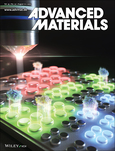
Y. Wang, S. Qin, N. Denisov, H. Kim, Z. Bad'ura, B. B. Sarma and P. Schmuki, "Reactive Deposition Versus Strong Electrostatic Adsorption (SEA): A Key to Highly Active Single Atom Co‐Catalysts in Photocatalytic H2 Generation," ADVANCED MATERIALS, vol. 35, iss. 32, pp. 2211814, 2023.
DOI: 10.1002/adma.202211814, IF = 32.086
Abstract: In recent years, the use of single atoms (SAs) has become of a rapidly increasing significance in photocatalytic H2 generation; here SA noble metals (mainly Pt SAs) can act as highly effective co-catalysts. The classic strategy to decorate oxide semiconductor surfaces with maximally dispersed SAs relies on “strong electrostatic adsorption” (SEA) of suitable noble metal complexes. In the case of TiO2 – the classic benchmark photocatalyst – SEA calls for adsorption of cationic Pt complexes such as [(NH3)4Pt]2+ which then are thermally reacted to surface-bound SAs. While SEA is widely used in literature, in the present work it is shown by a direct comparison that reactive attachment based on the reductive anchoring of SAs, e.g., from hexachloroplatinic(IV) acid (H2PtCl6) leads directly to SAs in a configuration with a significantly higher specific activity than SAs deposited with SEA – and this at a significantly lower Pt loading and without any thermal post-deposition treatments. Overall, the work demonstrates that the reactive deposition strategy is superior to the classic SEA concept as it provides a direct electronically well-connected SA-anchoring and thus leads to highly active single-atom sites in photocatalysis.
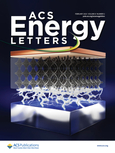
S. Qin, J. Will, H. Kim, N. Denisov, S. Carl, E. Spiecker and P. Schmuki, "Single Atoms in Photocatalysis: Low Loading Is Good Enough!," ACS ENERGY LETTERS, vol. 8, iss. 2, pp. 1209-1214, 2023.
DOI: 10.1021/acsenergylett.2c02801, IF = 23.991
Abstract: We disperse Pt single atoms (SAs) with different loading densities on anatase TiO2 thin films and evaluate the photocatalytic H2 generation as a function of the incident light intensity. We show that under common illumination intensities (such as terrestrial solar illumination), a minuscule Pt SA loading of ∼105 atoms μm–2 (surface Pt content ∼0.1 at.%) is sufficient to achieve a maximized H2 production rate. This results in a maximum turnover frequency at a single Pt atom site of ∼300 H2 molecules s–1. For a vast majority of illumination conditions and a suitable surface configuration, it is not the density of co-catalytic sites that is rate-determining (a high loading is not needed!), but the charge carrier generation (and flux of photoelectrons to the co-catalytic centers) determines the overall reaction rate. This is in stark contrast to SA catalysis of classic chemical reactions where generally a maximum loading of reactive SA delivers a maximum activity.
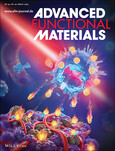
I. Tantis, S. Talande, V. Tzitzios, G. Basina, V. Shrivastav, A. Bakandritsos and R. Zboril, "Non‐van der Waals 2D Materials for Electrochemical Energy Storage," ADVANCED FUNCTIONAL MATERIALS, vol. 33, iss. 19, pp. 2209360, 2023.
DOI: 10.1002/adfm.202209360, IF = 19.924
Abstract: The development of advanced electrode materials for the next generation of electrochemical energy storage (EES) solutions has attracted profound research attention as a key enabling technology toward decarbonization and electrification of transportation. Since the discovery of graphene's remarkable properties, 2D nanomaterials, derivatives, and heterostructures thereof, have emerged as some of the most promising electrode components in batteries and supercapacitors owing to their unique and tunable physical, chemical, and electronic properties, commonly not observed in their 3D counterparts. This review particularly focuses on recent advances in EES technologies related to 2D crystals originating from non-layered 3D solids (non-van der Waals; nvdW) and their hallmark features pertaining to this field of application. Emphasis is given to the methods and challenges in top-down and bottom-up strategies toward nvdW 2D sheets and their influence on the materials’ features, such as charge transport properties, functionalization, or adsorption dynamics. The exciting advances in nvdW 2D-based electrode materials of different compositions and mechanisms of operation in EES are discussed. Finally, the opportunities and challenges of nvdW 2D systems are highlighted not only in electrochemical energy storage but also in other applications, including spintronics, magnetism, and catalysis.
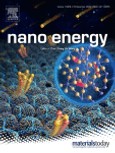
S. Rej, E. Y. Santiago, O. Baturina, Y. Zhang, S. Burger, S. Kment, A. O. Govorov and A. Naldoni, "Colloidal titanium nitride nanobars for broadband inexpensive plasmonics and photochemistry from visible to mid-IR wavelengths," NANO ENERGY, vol. 104, pp. 107989, 2023.
DOI: 10.1016/j.nanoen.2022.107989, IF = 19.069
Abstract: Developing colloidal plasmonic nanomaterials with high carrier density that show optical resonances and photochemical activity extending from the visible to the mid-infrared (MIR) ranges remains a challenging pursuit. Here, we report the fabrication of titanium nitride (TiN) nanobars obtained using a two–step procedure based on a wet chemical route synthesis of TiO2 nanowires and their subsequent high temperature annealing in ammonia flow. Electromagnetic simulations of the resulting TiN nanobars reveal a rich set of optical resonances featuring transverse, longitudinal and mixed transverse–longitudinal plasmonic modes that cover energies from the visible to MIR region. TiN nanobars decorated with Pt co-catalyst nanocrystals show enhanced photocatalytic hydrogen evolution activity in comparison to both isotropic TiN nanospheres of similar size and TiN nanocubes under near infrared excitation at 940 nm due to the enhanced hot electron generation. We also demonstrate that plasmonic TiN nanobars can be used for the detection of furfural molecular vibrations by providing a strong surface enhanced infrared absorption (SEIRA) effect in the MIR region.
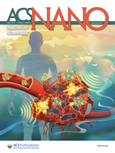
O. Henrotte, E. Y. Santiago, A. Movsesyan, L. Mascaretti, M. Afshar, A. Minguzzi, A. Vertova, Z. M. Wang, R. Zbořil, Š. Kment, A. O. Govorov and A. Naldoni, "Local Photochemical Nanoscopy of Hot-Carrier-Driven Catalytic Reactions Using Plasmonic Nanosystems," ACS NANO, vol. 17, iss. 12, pp. 11427-11438, 2023.
DOI: 10.1021/acsnano.3c01009, IF = 18.027
Abstract: Nanoscale investigation of the reactivity of photocatalytic systems is crucial for their fundamental understanding and improving their design and applicability. Here, we present a photochemical nanoscopy technique that unlocks the local spatial detection of molecular products during plasmonic hot-carrier-driven photocatalytic reactions with nanometric precision. By applying the methodology to Au/TiO2 plasmonic photocatalysts, we experimentally and theoretically determined that smaller and denser Au nanoparticle arrays present lower optical contribution with quantum efficiency in hot-hole-driven photocatalysis closely related to the population heterogeneity. As expected, the highest quantum yield from a redox probe oxidation is achieved at the plasmon peak. Investigating a single plasmonic nanodiode, we unravel the areas where oxidation and reduction products are evolved with subwavelength resolution (∼200 nm), illustrating the bipolar behavior of such nanosystems. These results open the way to quantitative investigations at the nanoscale to evaluate the photocatalytic reactivity of low-dimensional materials in a variety of chemical reactions.
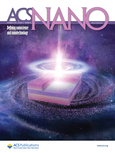
S. Deshmukh, K. Ghosh, M. Pykal, M. Otyepka and M. Pumera, "Laser-Induced MXene-Functionalized Graphene Nanoarchitectonics-Based Microsupercapacitor for Health Monitoring Application," ACS NANO, vol. 17, iss. 20, pp. 20537-20550, 2023.
DOI: 10.1021/acsnano.3c07319, IF = 18.027
Abstract: Microsupercapacitors (micro-SCs) with mechanical flexibility have the potential to complement or even replace microbatteries in the portable electronics sector, particularly for portable biomonitoring devices. The real-time biomonitoring of the human body’s physical status using lightweight, flexible, and wearable micro-SCs is important to consider, but the main limitation is, however, the low energy density of micro-SCs as compared to microbatteries. Here using a temporally and spatially controlled picosecond pulsed laser, we developed high-energy-density micro-SCs integrated with a force sensing device to monitor a human body’s radial artery pulses. The photochemically synthesized spherical laser-induced MXene (Ti3C2Tx)-derived oxide nanoparticles uniformly attached to laser-induced graphene (LIG) act as active electrode materials for micro-SCs. The molecular dynamics simulations and detailed spectroscopic analysis reveal the synergistic interfacial interaction mechanism of Ti–O–C covalent bonding between MXene and LIG. The incorporation of MXene nanosheets improves the graphene sheet alignment and ion transport while minimizing self-restacking. Furthermore, the micro-SCs based on a nano-MXene-LIG hybrid demonstrate high mechanical flexibility, durability, ultrahigh energy density (21.16 × 10–3 mWh cm–2), and excellent capacitance (∼100 mF cm–2 @ 10 mV s–1) with long cycle life (91% retention after 10 000 cycles). Such a single-step roll-to-roll highly reproducible manufacturing technique using a picosecond pulsed laser to induce MXene-derived spherical oxide nanoparticles (size of quantum dots) attached uniformly to laser-induced graphene for biomedical device fabrication is expected to find a wide range of applications.
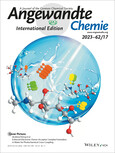
M. Xie, M. Gao, Y. Yun, M. Malmsten, V. M. Rotello, R. Zboril, O. Akhavan, A. Kraskouski, J. Amalraj, X. Cai, J. Lu, H. Zheng and R. Li, "Antibacterial Nanomaterials: Mechanisms, Impacts on Antimicrobial Resistance and Design Principles," ANGEWANDTE CHEMIE INTERNATIONAL EDITION, vol. 62, iss. 17, pp. e202217345, 2023.
DOI: 10.1002/anie.202217345, IF = 16.823
Abstract: Antimicrobial resistance (AMR) is one of the biggest threats to the environment and health. AMR rapidly invalidates conventional antibiotics, and antimicrobial nanomaterials have been increasingly explored as alternatives. Interestingly, several antimicrobial nanomaterials show AMR-independent antimicrobial effects without detectable new resistance and have therefore been suggested to prevent AMR evolution. In contrast, some are found to trigger the evolution of AMR. Given these seemingly conflicting findings, a timely discussion of the two faces of antimicrobial nanomaterials is urgently needed. This review systematically compares the killing mechanisms and structure-activity relationships of antibiotics and antimicrobial nanomaterials. We then focus on nano-microbe interactions to elucidate the impacts of molecular initiating events on AMR evolution. Finally, we provide an outlook on future antimicrobial nanomaterials and propose design principles for the prevention of AMR evolution.
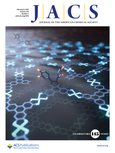
K. Biswas, D. Soler, S. Mishra, Q. Chen, X. Yao, A. Sánchez-Grande, K. Eimre, P. Mutombo, C. Martín-Fuentes, K. Lauwaet, J. M. Gallego, P. Ruffieux, C. A. Pignedoli, K. Müllen, R. Miranda, J. I. Urgel, A. Narita, R. Fasel, P. Jelínek and D. Écija, "Steering Large Magnetic Exchange Coupling in Nanographenes near the Closed-Shell to Open-Shell Transition," JOURNAL OF THE AMERICAN CHEMICAL SOCIETY, vol. 145, iss. 5, pp. 2968-2974, 2023.
DOI: 10.1021/jacs.2c11431, IF = 16.383
Abstract: The design of open-shell carbon-based nanomaterials is at the vanguard of materials science, steered by their beneficial magnetic properties like weaker spin–orbit coupling than that of transition metal atoms and larger spin delocalization, which are of potential relevance for future spintronics and quantum technologies. A key parameter in magnetic materials is the magnetic exchange coupling (MEC) between unpaired spins, which should be large enough to allow device operation at practical temperatures. In this work, we theoretically and experimentally explore three distinct families of nanographenes (NGs) (A, B, and C) featuring majority zigzag peripheries. Through many-body calculations, we identify a transition from a closed-shell ground state to an open-shell ground state upon an increase of the molecular size. Our predictions indicate that the largest MEC for open-shell NGs occurs in proximity to the transition between closed-shell and open-shell states. Such predictions are corroborated by the on-surface syntheses and structural, electronic, and magnetic characterizations of three NGs (A[3,5], B[4,5], and C[4,3]), which are the smallest open-shell systems in their respective chemical families and are thus located the closest to the transition boundary. Notably, two of the NGs (B[4,5] and C[4,3]) feature record values of MEC (close to 200 meV) measured on the Au(111) surface. Our strategy for maximizing the MEC provides perspectives for designing carbon nanomaterials with robust magnetic ground states.
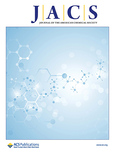
M. Altomare, S. Qin, V. A. Saveleva, Z. Badura, O. Tomanec, A. Mazare, G. Zoppellaro, A. Vertova, A. Taglietti, A. Minguzzi, P. Ghigna and P. Schmuki, "Metastable Ni(I)-TiO2–x Photocatalysts: Self-Amplifying H2 Evolution from Plain Water without Noble Metal Co-Catalyst and Sacrificial Agent," JOURNAL OF THE AMERICAN CHEMICAL SOCIETY, vol. 145, iss. 48, pp. 26122-26132, 2023.
DOI: 10.1021/jacs.3c08199, IF = 16.383
Abstract: Decoration of semiconductor photocatalysts with cocatalysts is generally done by a step-by-step assembly process. Here, we describe the self-assembling and self-activating nature of a photocatalytic system that forms under illumination of reduced anatase TiO2 nanoparticles in an aqueous Ni2+ solution. UV illumination creates in situ a Ni+/TiO2/Ti3+ photocatalyst that self-activates and, over time, produces H2 at a higher rate. In situ X-ray absorption spectroscopy and electron paramagnetic resonance spectroscopy show that key to self-assembly and self-activation is the light-induced formation of defects in the semiconductor, which enables the formation of monovalent nickel (Ni+) surface states. Metallic nickel states, i.e., Ni0, do not form under the dark (resting state) or under illumination (active state). Once the catalyst is assembled, the Ni+ surface states act as electron relay for electron transfer to form H2 from water, in the absence of sacrificial species or noble metal cocatalysts.
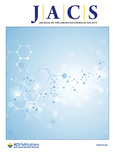
M. Medved’, M. Di Donato, W. J. Buma, A. D. Laurent, L. Lameijer, T. Hrivnák, I. Romanov, S. Tran, B. L. Feringa, W. Szymanski and G. A. Woolley, "Mechanistic Basis for Red Light Switching of Azonium Ions," JOURNAL OF THE AMERICAN CHEMICAL SOCIETY, vol. 145, iss. 36, pp. 19894–19902, 2023.
DOI: 10.1021/jacs.3c06157, IF = 16.383
Abstract: Azonium ions formed by the protonation of tetra-ortho-methoxy-substituted aminoazobenzenes photoisomerize with red light under physiological conditions. This property makes them attractive as molecular tools for the photocontrol of physiological processes, for example, in photopharmacology. However, a mechanistic understanding of the photoisomerization process and subsequent thermal relaxation is necessary for the rational application of these compounds as well as for guiding the design of derivatives with improved properties. Using a combination of sub-ps/ns transient absorption measurements and quantum chemical calculations, we show that the absorption of a photon by the protonated E–H+ form of the photoswitch causes rapid (ps) isomerization to the protonated Z–H+ form, which can also absorb red light. Proton transfer to solvent then occurs on a microsecond time scale, leading to an equilibrium between Z and Z–H+ species, the position of which depends on the solution pH. Whereas thermal isomerization of the neutral Z form to the neutral E form is slow (∼0.001 s–1), thermal isomerization of Z–H+ to E–H+ is rapid (∼100 s–1), so the solution pH also governs the rate at which E/E–H+ concentrations are restored after a light pulse. This analysis provides the first complete mechanistic picture that explains the observed intricate photoswitching behavior of azonium ions at a range of pH values. It further suggests features of azonium ions that could be targeted for improvement to enhance the applicability of these compounds for the photocontrol of biomolecules.
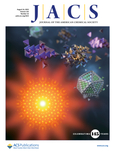
M. González-Sánchez, M. J. Mayoral, V. Vázquez-González, M. Paloncýová, I. Sancho-Casado, F. Aparicio, A. de Juan, G. Longhi, P. Norman, M. Linares and D. González-Rodríguez, "Stacked or Folded? Impact of Chelate Cooperativity on the Self-Assembly Pathway to Helical Nanotubes from Dinucleobase Monomers," JOURNAL OF THE AMERICAN CHEMICAL SOCIETY, vol. 145, iss. 32, pp. 17805-17818, 2023.
DOI: 10.1021/jacs.3c04773, IF = 16.383
Abstract: Self-assembled nanotubes exhibit impressive biological functions that have always inspired supramolecular scientists in their efforts to develop strategies to build such structures from small molecules through a bottom-up approach. One of these strategies employs molecules endowed with self-recognizing motifs at the edges, which can undergo either cyclization–stacking or folding–polymerization processes that lead to tubular architectures. Which of these self-assembly pathways is ultimately selected by these molecules is, however, often difficult to predict and even to evaluate experimentally. We show here a unique example of two structurally related molecules substituted with complementary nucleobases at the edges (i.e., G:C and A:U) for which the supramolecular pathway taken is determined by chelate cooperativity, that is, by their propensity to assemble in specific cyclic structures through Watson–Crick pairing. Because of chelate cooperativities that differ in several orders of magnitude, these molecules exhibit distinct supramolecular scenarios prior to their polymerization that generate self-assembled nanotubes with different internal monomer arrangements, either stacked or coiled, which lead at the same time to opposite helicities and chiroptical properties.
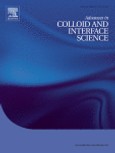
V. Shrivastav, Mansi, B. Gupta, P. Dubey, A. Deep, W. Nogala, V. Shrivastav and S. Sundriyal, "Recent advances on surface mounted metal-organic frameworks for energy storage and conversion applications: Trends, challenges, and opportunities," ADVANCES IN COLLOID AND INTERFACE SCIENCE, vol. 318, pp. 102967, 2023.
DOI: 10.1016/j.cis.2023.102967, IF = 15.190
Abstract: Establishing green and reliable energy resources is very important to counteract the carbon footprints and negative impact of non-renewable energy resources. Metal-organic frameworks (MOFs) are a class of porous material finding numerous applications due to their exceptional qualities, such as high surface area, low density, superior structural flexibility, and stability. Recently, increased attention has been paid to surface mounted MOFs (SURMOFs), which is nothing but thin film of MOF, as a new category in nanotechnology having unique properties compared to bulk MOFs. With the advancement of material growth and synthesis technologies, the fine tunability of film thickness, consistency, size, and geometry with a wide range of MOF complexes is possible. In this review, we recapitulate various synthesis approaches of SURMOFs including epitaxial synthesis approach, direct solvothermal method, Langmuir-Blodgett LBL deposition, Inkjet printing technique and others and then correlated the synthesis-structure-property relationship in terms of energy storage and conversion applications. Further the critical assessment and current problems of SURMOFs have been briefly discussed to explore the future opportunities in SURMOFs for energy storage and conversion applications.
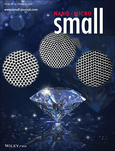
X. Zhou, S. Wu and P. Schmuki, "Spontaneous Dewetting of Au‐Thin Layers on Oxide‐ and Fluorine‐Terminated Single Crystalline Anatase and Efficient Use in Photocatalytic H2 Production," SMALL, vol. 19, iss. 43, pp. 202303306, 2023.
DOI: 10.1002/smll.202303306, IF = 15.153
Abstract: In the present work, the spontaneous dewetting of thin Au layers on single crystalline anatase nanosheets into narrow-disperse Au nanoparticles is investigated. Patterns of the Au particles can be formed on the main facets of anatase that provide a high co-catalytic activity for photocatalytic generation of H2. Dewetting is distinctly influenced by the respective facets (001) and (101), the deposit thickness, and secondary thermal dewetting, but most strongly by the surface termination of the nanosheets. Fluoride termination not only leads to an enhanced Au-phobic behavior but strongly affects the co-catalytic activity for photocatalytic generation of H2. While fluoride termination with or without Au decoration is detrimental for hole transfer, the interplay of the Au co-catalyst and surface fluoride yields highly beneficial effect for electron transfer. This results in a three-times higher photocatalytic H2 production for the F-terminated surface. The findings suggest that dewetting of Au on surface fluorinated TiO2 is an effective way to modulate surface dewetting and achieve a strongly enhanced photocatalytic activity.
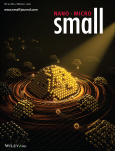
J. M. R. Flauzino, M. Nalepa, D. D. Chronopoulos, V. Šedajová, D. Panáček, P. Jakubec, P. Kührová, M. Pykal, P. Banáš, A. Panáček, A. Bakandritsos and M. Otyepka, "Click and Detect: Versatile Ampicillin Aptasensor Enabled by Click Chemistry on a Graphene–Alkyne Derivative," SMALL, vol. 19, iss. 51, pp. 202207216, 2023.
DOI: 10.1002/smll.202207216, IF = 15.153
Abstract: Tackling the current problem of antimicrobial resistance (AMR) requires fast, inexpensive, and effective methods for controlling and detecting antibiotics in diverse samples at the point of interest. Cost-effective, disposable, point-of-care electrochemical biosensors are a particularly attractive option. However, there is a need for conductive and versatile carbon-based materials and inks that enable effective bioconjugation under mild conditions for the development of robust, sensitive, and selective devices. This work describes a simple and fast methodology to construct an aptasensor based on a novel graphene derivative equipped with alkyne groups prepared via fluorographene chemistry. Using click chemistry, an aptamer is immobilized and used as a successful platform for the selective determination of ampicillin in real samples in the presence of interfering molecules. The electrochemical aptasensor displayed a detection limit of 1.36 nM, high selectivity among other antibiotics, the storage stability of 4 weeks, and is effective in real samples. Additionally, structural and docking simulations of the aptamer shed light on the ampicillin binding mechanism. The versatility of this platform opens up wide possibilities for constructing a new class of aptasensor based on disposable screen-printed carbon electrodes usable in point-of-care devices.
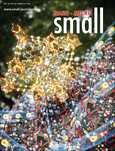
L. Zdražil, Z. Baďura, M. Langer, S. Kalytchuk, D. Panáček, M. Scheibe, Š. Kment, H. Kmentová, M. A. Thottappali, E. Mohammadi, M. Medveď, A. Bakandritsos, G. Zoppellaro, R. Zbořil and M. Otyepka, "Magnetic Polaron States in Photoluminescent Carbon Dots Enable Hydrogen Peroxide Photoproduction," SMALL, vol. 19, iss. 32, pp. 2206587, 2023.
DOI: 10.1002/smll.202206587, IF = 15.153
Abstract: Photoactivation of aspartic acid-based carbon dots (Asp-CDs) induces the generation of spin-separated species, including electron/hole (e−/h+) polarons and spin-coupled triplet states, as uniquely confirmed by the light-induced electron paramagnetic resonance spectroscopy. The relative population of the e−/h+ pairs and triplet species depends on the solvent polarity, featuring a substantial stabilization of the triplet state in a non-polar environment (benzene). The electronic properties of the photoexcited Asp-CDs emerge from their spatial organization being interpreted as multi-layer assemblies containing a hydrophobic carbonaceous core and a hydrophilic oxygen and nitrogen functionalized surface. The system properties are dissected theoretically by density functional theory in combination with molecular dynamics simulations on quasi-spherical assemblies of size-variant flakelike model systems, revealing the importance of size dependence and interlayer effects. The formation of the spin-separated states in Asp-CDs enables the photoproduction of hydrogen peroxide (H2O2) from water and water/2-propanol mixture via a water oxidation reaction.

A. Cheruvathoor Poulose, M. Medveď, V. R. Bakuru, A. Sharma, D. Singh, S. B. Kalidindi, H. Bares, M. Otyepka, K. Jayaramulu, A. Bakandritsos and R. Zbořil, "Acidic graphene organocatalyst for the superior transformation of wastes into high-added-value chemicals," NATURE COMMUNICATIONS, vol. 14, pp. 1373, 2023.
DOI: 10.1038/s41467-023-36602-0, IF = 14.919
Abstract: Our dependence on finite fossil fuels and the insecure energy supply chains have stimulated intensive research for sustainable technologies. Upcycling glycerol, produced from biomass fermentation and as a biodiesel formation byproduct, can substantially contribute in circular carbon economy. Here, we report glycerol’s solvent-free and room-temperature conversion to high-added-value chemicals via a reusable graphene catalyst (G-ASA), functionalized with a natural amino acid (taurine). Theoretical studies unveil that the superior performance of the catalyst (surpassing even homogeneous, industrial catalysts) is associated with the dual role of the covalently linked taurine, boosting the catalyst’s acidity and affinity for the reactants. Unlike previous catalysts, G-ASA exhibits excellent activity (7508 mmol g−1 h−1) and selectivity (99.9%) for glycerol conversion to solketal, an additive for improving fuels’ quality and a precursor of commodity and fine chemicals. Notably, the catalyst is also particularly active in converting oils to biodiesel, demonstrating its general applicability.

B. Mallada, M. Ondráček, M. Lamanec, A. Gallardo, A. Jiménez-Martín, B. de la Torre, P. Hobza and P. Jelínek, "Visualization of π-hole in molecules by means of Kelvin probe force microscopy," NATURE COMMUNICATIONS, vol. 14, iss. 1, pp. 4954, 2023.
DOI: 10.1038/s41467-023-40593-3, IF = 14.919
Abstract: Submolecular charge distribution significantly affects the physical-chemical properties of molecules and their mutual interaction. One example is the presence of a π-electron-deficient cavity in halogen-substituted polyaromatic hydrocarbon compounds, the so-called π-holes, the existence of which was predicted theoretically, but the direct experimental observation is still missing. Here we present the resolution of the π-hole on a single molecule using the Kelvin probe force microscopy, which supports the theoretical prediction of its existence. In addition, experimental measurements supported by theoretical calculations show the importance of π-holes in the process of adsorption of molecules on solid-state surfaces. This study expands our understanding of the π-hole systems and, at the same time, opens up possibilities for studying the influence of submolecular charge distribution on the chemical properties of molecules and their mutual interaction.
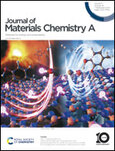
S. Qin, J. Guo, X. Chen, R. Cao, N. Denisov, Y. Song and P. Schmuki, "Pt single atoms dispersed in a hybrid MOFox-in-nanotube structure for efficient and long-term stable photocatalytic H2 generation," JOURNAL OF MATERIALS CHEMISTRY A, vol. 11, iss. 33, pp. 17759-17768, 2023.
DOI: 10.1039/d3ta00996c, IF = 14.511
Abstract: Atomically dispersed Pt single atoms (SAs) have been reported to be a highly effective co-catalyst on TiO2 for photocatalytic H2 generation. Many TiO2 supports have been explored for hosting Pt SAs. Particularly 1D titania hosts allow for an optimized light and charge carrier management. But, attached Pt SAs often suffer from agglomeration during the photocatalytic process. In this context, titania-based metal–organic frameworks (MOFs), such as MIL-125, have attracted wide attention, as they provide stable anchoring sites for Pt SAs. To combine the beneficial features of the 1D TiO2 morphology with the SA stability, we introduce here a hierarchical structure, where the Pt SAs are dispersed in MOF-derived porous oxide features that are embedded in aligned anodic TiO2 nanotubes. This hybrid structure is intrinsically (within the nanotubes) synthesized and combines the excellent light harvesting and carrier transport properties of titania nanotubes with the beneficial features of MOF. As a result of this synergy, we obtain not only a high photocatalytic H2 evolution efficiency but most importantly a remarkably long-term stability of H2 evolution under UV light (365 nm) or simulated solar light (AM 1.5).
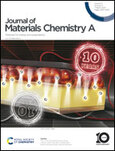
M. Lesňák, D. Cvejn, M. Petr, P. Peikertová, R. Gabor, T. Fördös, P. Czernek and D. Plachá, "A novel N-doped carbon nanomaterial – carbon nano-mousse," JOURNAL OF MATERIALS CHEMISTRY A, vol. 11, iss. 9, pp. 4627-4638, 2023.
DOI: 10.1039/d2ta07947j, IF = 14.511
Abstract: A novel N-doped carbon material was obtained using a CVD-like procedure by depositing medium-sized pyridine-based molecules on copper-based substrates. The resulting material is a system of interconnected multi-wall carbon nanospheres (approx. 200 nm in diameter) with substantial N-doping (up to 14.8 atom% according to XPS). This material was named “nano-mousse” as it resembles the mousse on champagne in the electron microscopy images. A series of N-doped carbon nano-mousses were prepared by varying the temperature and precursor of the procedure. All of the nano-mousses were characterized by XPS and Raman microspectroscopy. Selected samples were further studied by several types of electron microscopies and spectroscopic ellipsometry. As it appears, N-doped carbon nano-mousses have metal-like properties in terms of optical conductivity and other optical properties, along with macroscopic appearance. XPS and Raman microspectroscopy revealed that their structure and chemical composition is highly dependent on both the nature of the precursor and preparation conditions.
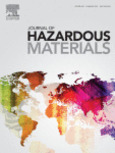
M. Brumovský, V. Micić, J. Oborná, J. Filip, T. Hofmann and D. Tunega, "Iron nitride nanoparticles for rapid dechlorination of mixed chlorinated ethene contamination," JOURNAL OF HAZARDOUS MATERIALS, vol. 442, pp. 129988, 2024.
DOI: 10.1016/j.jhazmat.2022.129988, IF = 14.224
Abstract: Sulfidation and, more recently, nitriding have been recognized as promising modifications to enhance the selectivity of nanoscale zero-valent iron (nZVI) particles for trichloroethene (TCE). Herein, we investigated the performance of iron nitride (FexN) nanoparticles in the removal of a broader range of chlorinated ethenes (CEs), including tetrachloroethene (PCE), cis-1,2-dichloroethene (cis-DCE), and their mixture with TCE, and compared it to the performance of sulfidated nZVI (S-nZVI) prepared from the same precursor nZVI. Two distinct types of iron nitride (FexN) nanoparticles, containing γ'-Fe4N and ε-Fe2-3N phases, exhibited substantially higher PCE and cis-DCE dechlorination rates compared to S-nZVI. A similar effect was observed with a CE mixture, which was completely dechlorinated by both types of FexN nanoparticles within 10 days, whereas S-nZVI was able to remove only about half of the amount, most of which being TCE. Density functional theory calculations further revealed that the cleavage of the first C-Cl bond was the rate-limiting step for all CEs dechlorinated on the γ'-Fe4N(001) surface, with the reaction barriers of PCE and cis-DCE being 29.9, and 40.8 kJ mol-1, respectively. FexN nanoparticles proved to be highly effective in the remediation of PCE, cis-DCE, and mixed CE contamination.
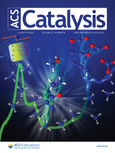
D. Qiu, M. Cheng, P. Stadlbauer, J. Chen, M. Langer, X. Zhang, Q. Gao, H. Ju, J. Šponer, J. Mergny, D. Monchaud and J. Zhou, "Topology of DNA G-Quadruplexes Can Be Harnessed in Holliday Junction-Based DNA Suprastructures to Control and Optimize Their Biocatalytic Properties," ACS CATALYSIS, vol. 13, iss. 16, pp. 10722-10733, 2023.
DOI: 10.1021/acscatal.3c02818, IF = 13.700
Abstract: The nature, composition, and topology of the active sites of both natural and artificial enzymes are key determinants of their catalytic performance. While interesting structural insights have been obtained for natural enzymes (e.g., horseradish peroxidase, HRP), the accurate catalytic microenvironment of HRP-mimicking DNA-based catalysts known as G-quadruplex (GQ)/hemin DNAzymes is still unclear. Herein, we report on a strategy allowing for fully controlling the nature of the active site of GQ DNAzyme, precisely manipulating the composition and topology of the hemin (Fe(III)-protoporphyrin IX) cofactor binding site. This was achieved by introducing GQ within a Holliday junction (HJ) suprastructure that enables to seize control of both the GQ folding topology (parallel, antiparallel, hybrid) and the GQ strand directionality (clockwise, counter-clockwise). By doing so, we demonstrate that the different GQ topologies are equivalent for both hemin binding and activation and that the flanking nucleotides (dA or dTC) modulate the activation of hemin in a GQ topology-dependent manner. Our experimental findings are supported by the most extensive molecular dynamics simulations ever been done on GQ DNAzyme, thus providing unique mechanistic insights into the biocatalytic activity of GQs.

R. G. Kadam, M. Medved’, S. Kumar, D. Zaoralová, G. Zoppellaro, Z. Bad’ura, T. Montini, A. Bakandritsos, E. Fonda, O. Tomanec, M. Otyepka, R. S. Varma, M. B. Gawande, P. Fornasiero and R. Zbořil, "Linear-Structure Single-Atom Gold(I) Catalyst for Dehydrogenative Coupling of Organosilanes with Alcohols," ACS CATALYSIS, vol. 13, , pp. 16067-16077, 2023.
DOI: 10.1021/acscatal.3c03937, IF = 13.700
Abstract: A strategy for the synthesis of a gold-based single-atom catalyst (SAC) via a one-step room temperature reduction of Au(III) salt and stabilization of Au(I) ions on nitrile-functionalized graphene (cyanographene; G-CN) is described. The graphene-supported G(CN)-Au catalyst exhibits a unique linear structure of the Au(I) active sites promoting a multistep mode of action in dehydrogenative coupling of organosilanes with alcohols under mild reaction conditions as proven by advanced XPS, XAFS, XANES, and EPR techniques along with DFT calculations. The linear structure being perfectly accessible toward the reactant molecules and the cyanographene-induced charge transfer resulting in the exclusive Au(I) valence state contribute to the superior efficiency of the emerging two-dimensional SAC. The developed G(CN)-Au SAC, despite its low metal loading (ca. 0.6 wt %), appear to be the most efficient catalyst for Si–H bond activation with a turnover frequency of up to 139,494 h–1 and high selectivities, significantly overcoming all reported homogeneous gold catalysts. Moreover, it can be easily prepared in a multigram batch scale, is recyclable, and works well toward more than 40 organosilanes. This work opens the door for applications of SACs with a linear structure of the active site for advanced catalytic applications.
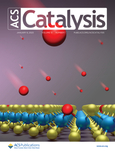
S. Wu, I. Hwang, B. Osuagwu, J. Will, Z. Wu, B. B. Sarma, F. Pu, L. Wang, Z. Badura, G. Zoppellaro, E. Spiecker and P. Schmuki, "Fluorine Aided Stabilization of Pt Single Atoms on TiO2 Nanosheets and Strongly Enhanced Photocatalytic H2 Evolution," ACS CATALYSIS, vol. 13, iss. 1, pp. 33-41, 2023.
DOI: 10.1021/acscatal.2c04481, IF = 13.700
Abstract: Trapping sites in single atom (SA) catalysts are critical to the stabilization and reactivity of isolated atoms. Herein, we show that anchoring of Pt SAs on TiO2 nanosheets is strongly aided by lattice incorporated fluorine species. Tailoring the speciation of fluorine on TiO2 nanosheets is a key factor for uniform and stable dispersion of the Pt SAs and high efficiency in Pt SA co-catalyzed photocatalytic H2 production. Fluorine-stabilized uniformly dispersed Pt SAs on the (001) surface of TiO2 can provide a remarkable photocatalytic activity (a H2 production rate of 45.3 mmol h–1 mg–1 Pt for 65 mW/cm2 365 nm light). This high (maximized) efficiency can be achieved with a remarkably low loading amount of Pt SAs on TiO2 nanosheets (0.03 wt %), which is far superior to Pt nanoparticles on a TiO2 nanosheet with the same or a higher loading amount. F-stabilized Pt SAs on TiO2 nanosheets also exhibit an excellent stability in long-term photocatalytic reactions.

Y. Zhang, L. Mascaretti, M. Melchionna, O. Henrotte, Š. Kment, P. Fornasiero and A. Naldoni, "Thermoplasmonic In Situ Fabrication of Nanohybrid Electrocatalysts over Gas Diffusion Electrodes for Enhanced H2O2 Electrosynthesis," ACS CATALYSIS, vol. 13, iss. 15, pp. 10205-10216, 2023.
DOI: 10.1021/acscatal.3c01837, IF = 13.700
Abstract: Large-scale development of electrochemical cells is currently hindered by the lack of Earth-abundant electrocatalysts with high catalytic activity, product selectivity, and interfacial mass transfer. Herein, we developed an electrocatalyst fabrication approach which responds to these requirements by irradiating plasmonic titanium nitride (TiN) nanocubes self-assembled on a carbon gas diffusion layer in the presence of polymeric binders. The localized heating produced upon illumination creates unique conditions for the formation of TiN/F-doped carbon hybrids that show up to nearly 20 times the activity of the pristine electrodes. In alkaline conditions, they exhibit enhanced stability, a maximum H2O2 selectivity of 90%, and achieve a H2O2 productivity of 207 mmol gTiN–1 h–1 at 0.2 V vs RHE. A detailed electrochemical investigation with different electrode arrangements demonstrated the key role of nanocomposite formation to achieve high currents. In particular, an increased TiOxNy surface content promoted a higher H2O2 selectivity, and fluorinated nanocarbons imparted good stability to the electrodes due to their superhydrophobic properties.
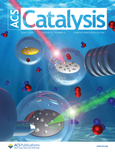
E. Zhao, W. Zhang, L. Dong, R. Zbořil and Z. Chen, "Photocatalytic Transfer Hydrogenation Reactions Using Water as the Proton Source," ACS CATALYSIS, vol. 13, iss. 11, pp. 7557-7567, 2023.
DOI: 10.1021/acscatal.3c00326, IF = 13.700
Abstract: Transfer hydrogenation using liquid hydrogen carriers as the direct proton sources under mild conditions has received extensive attention in the research area of organic synthesis. The emerging photocatalytic water-donating transfer hydrogenation (PWDTH) is a promising alternative over the conventional hydrogenation technology due to the advantages of being eco-friendly. This paper focuses on the recent advances in the rising and rapidly developing field of PWDTH reactions, devoted to elucidating the mechanism of the hydrogen transfer process and rationalizing the design principles of efficient photocatalysts. Finally, the current challenges and future opportunities are described.
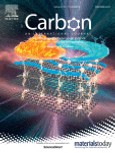
T. Malina, C. Hirsch, A. Rippl, D. Panacek, K. Polakova, V. Sedajova, M. Scheibe, R. Zboril and P. Wick, "Safety assessment of graphene acid and cyanographene: Towards new carbon-based nanomedicine," CARBON, vol. 211, pp. 118093, 2023.
DOI: 10.1016/j.carbon.2023.118093, IF = 11.307
Abstract: Graphene oxide (GO) has been intensively studied in last decades as a promising delivery nanoplatform. Although it surpasses the pristine graphene in its hydrophilic properties, variability in GO syntheses and chemical composition, its non-specific surface properties and heterogeneity in colloidal stability hamper its commercial application in general. Reliable cytotoxicity investigation of new nanotherapeutics under relevant physiological conditions represents an indispensable first step for their potential clinical translation. In the case of delivery nanoplatforms, the vasculature represents the first encounter after intravenous application. Therefore, an evaluation of interaction with endothelial and immune cells is highly desirable. Here, we performed a first comprehensive safety assessment of emerging graphene derivatives with high potential in biomedical technologies: graphene acid (GA) and cyanographene (GCN). We utilized an easy-to-use co-culture model of matured human umbilical vein endothelial cells (HUVECs) and a human monocyte/macrophage like cell line (THP-1) under dynamic flow conditions. An environment that has not been used yet to evaluate any graphene material. Our results demonstrate that well-defined synthesis/structure of GA and GCN overcome some drawbacks of graphene oxide (GO), the benchmark graphene derivative. Furthermore, applying a system mimicking a simplified blood vessel, both GA and GCN showed excellent biocompatibility without any indication of acute inflammation or dysfunction of endothelium. In summary, GA and GCN display so far all desirable properties to be potentially utilized in drug/gene delivery applications compared to the conventional GO.

R. Dvorsky, J. Kukutschová, M. Pagáč, L. Svoboda, Z. Šimonová, K. Peterek Dědková, J. Bednář, R. G. Mendes, D. Matýsek, O. Malina, J. Tuček, Z. Vilamová, S. Kiselev, T. Gemming and P. Filip, "Analysis and modelling of single domain core-shell (αFeNi/chromite) nanoparticles emitted during selective laser melting, and their magnetic remanence," JOURNAL OF CLEANER PRODUCTION, vol. 400, pp. 136688, 2023.
DOI: 10.1016/j.jclepro.2023.136688, IF = 11.072
Abstract: Despite recent intense implementation of increasingly eco-friendly additive manufacturing, the properties of nanoparticulate pollutants emitted during Laser Powder Bed Fusion are still not fully understood, and have generally been overlooked. This study aims to fill this gap in current research by providing new insights into distinct metal/oxide core-shell nanoparticles (3–36 nm) that are produced during 3D printing using stainless steel. It also suggests possible ways for the removal of these potentially harmful by-products. Further, this research also provides a newly developed kinetic model that predicts a metal core growth time of below 200 μs and confirms the predicted theory for the formation of these by-products. In the current study it was found that the cores produced during this process are purely metallic and consist of meteoroid phase kamacite (αFeNi). Within this study there was found to be a complete dominance of single-domain cores of kamacite with prevailing particles below the superparamagnetic threshold showing strong magnetic response and remanence. This new knowledge can be used to minimize potential health risks and reduce contamination of raw materials by this nanoparticulate pollutant, which can adversely affect the quality of printed metal parts, the environment, and the health of the operator. These findings also provide a new possibility of targeted efficient production of superparamagnetic core-shell nanoparticles with a metallic kamacite core during laser powder bed fusion of austenitic steel 316L powder, which can be used in the production of sensors.
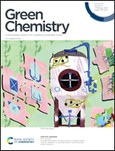
Q. Yang, E. Nguyen, D. Panáček, V. Šedajová, V. Hrubý, G. Rosati, C. de C. C. Silva, A. Bakandritsos, M. Otyepka and A. Merkoçi, "Metal-free cysteamine-functionalized graphene alleviates mutual interferences in heavy metal electrochemical detection," GREEN CHEMISTRY, vol. 25, iss. 4, pp. 1647-1657, 2023.
DOI: 10.1039/D2GC02978B, IF = 11.034
Abstract: Heavy metal pollutants are of great concern to environmental monitoring due to their potent toxicity. Electrochemical detection, one of the main techniques, is hindered by the mutual interferences of various heavy metal ions in practical use. In particular, the sensitivity of carbon electrodes to Cd2+ ions (one of the most toxic heavy metals) is often overshadowed by some heavy metals (e.g. Pb2+ and Cu2+). To mitigate interference, metallic particles/films (e.g. Hg, Au, Bi, and Sn) typically need to be embedded in the carbon electrodes. However, these additional metallic materials may face issues of secondary pollution and unsustainability. In this study, a metal-free and sustainable nanomaterial, namely cysteamine covalently functionalized graphene (GSH), was found to lead to a 6-fold boost in the Cd2+ sensitivity of the screen-printed carbon electrode (SPCE), while the sensitivities to Pb2+ and Cu2+ were not influenced in simultaneous detection. The selective enhancement could be attributed to the grafted thiols on GSH sheets with good affinity to Cd2+ ions based on Pearson's hard and soft acid and base principle. More intriguingly, the GSH-modified SPCE (GSH-SPCE) featured high reusability with extended cycling times (23 times), surpassing the state-of-art SPCEs modified by non-covalently functionalized graphene derivatives. Last, the GSH-SPCE was validated in tap water.

O. T. Eroldoğan, B. Glencross, L. Novoveska, S. P. Gaudêncio, B. Rinkevich, G. C. Varese, M. de Fátima Carvalho, D. Tasdemir, I. Safarik, S. L. Nielsen, C. Rebours, L. B. Lada, J. Robbens, E. Strode, B. Z. Haznedaroğlu, J. Kotta, E. Evliyaoğlu, J. Oliveira, M. Girão, M. I. Vasquez, I. Čabarkapa, S. Rakita, K. Klun and A. Rotter, "From the sea to aquafeed: A perspective overview," REVIEWS IN AQUACULTURE, vol. 15, iss. 3, pp. 1028-1057, 2023.
DOI: 10.1111/raq.12740, IF = 10.618
Abstract: Aquaculture has been one of the fastest-growing food production systems sectors for over three decades. With its growth, the demand for alternative, cheaper and high-quality feed ingredients is also increasing. Innovation investments on providing new functional feed alternatives have yielded several viable alternative raw materials. Considering all the current feed ingredients, their circular adaption in the aquafeed manufacturing industry is clearly of the utmost importance to achieve sustainable aquaculture in the near future. The use of terrestrial plant materials and animal by-products predominantly used in aquafeed ingredients puts a heavily reliance on terrestrial agroecosystems, which also has its own sustainability concerns. Therefore, the aquafeed industry needs to progress with functional and sustainable alternative raw materials for feed that must be more resilient and consistent, considering a circular perspective. In this review, we assess the current trends in using various marine organisms, ranging from microorganisms (including fungi, thraustochytrids, microalgae and bacteria) to macroalgae and macroinvertebrates as viable biological feed resources. This review focuses on the trend of circular use of resources and the development of new value chains. In this, we present a perspective of promoting novel circular economy value chains that promote the re-use of biological resources as valuable feed ingredients. Thus, we highlight some potentially important marine-derived resources that deserve further investigations for improving or addressing circular aquaculture.
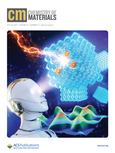
K. L. Kollmannsberger, Poonam, C. Cesari, R. Khare, T. Kratky, M. Boniface, O. Tomanec, J. Michalička, E. Mosconi, A. Gagliardi, S. Günther, W. Kaiser, T. Lunkenbein, S. Zacchini, J. Warnan and R. A. Fischer, "Mechanistic Insights into ZIF-8 Encapsulation of Atom-Precise Pt(M) Carbonyl Clusters," CHEMISTRY OF MATERIALS, vol. 35, iss. 14, pp. 5475-5486, 2023.
DOI: 10.1021/acs.chemmater.3c00807, IF = 10.508
Abstract: Precisely designing metal nanoparticles (NPs) is the cornerstone for maximizing their efficiency in applications like catalysis or sensor technology. Metal–organic frameworks (MOFs) with their defined and tunable pore systems provide a confined space to host and stabilize small metal NPs. In this work, the MOF encapsulation of various atom-precise clusters following the bottle-around-ship approach is investigated, providing general insights into the scaffolding mechanism. Eleven carbonyl-stabilized Pt(M) (M = Co, Ni, Fe, and Sn) clusters are employed for the encapsulation in the zeolitic imidazolate framework (ZIF)-8. Infrared and UV/Vis spectroscopy, density functional theory, and ab initio molecular dynamics revealed structure–encapsulation relationship guidelines. Thereby, cluster polarization, size, and composition were found to condition the scaffolding behavior. Encaging of [NBnMe3]2[Co8Pt4C2(CO)24] (Co8Pt4) is thus achieved as the first MOF-encapsulated bimetallic carbonyl cluster, Co8Pt4@ZIF-8, and is fully characterized including X-ray absorption near edge and extended X-ray absorption spectroscopy. ZIF-8 confinement not only promotes property changes, like the T-dependent magnetism, but it also further allows heat-induced ligand-stripping without altering the cluster size, enabling the synthesis of naked, heterometallic, close to atom-precise clusters.
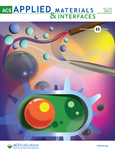
M. N. Krstajić Pajić, A. S. Dobrota, A. Mazare, S. Đurđić, I. Hwang, N. V. Skorodumova, D. Manojlović, R. Vasilić, I. A. Pašti, P. Schmuki and U. Lačnjevac, "Activation of Osmium by the Surface Effects of Hydrogenated TiO2 Nanotube Arrays for Enhanced Hydrogen Evolution Reaction Performance," ACS APPLIED MATERIALS & INTERFACES, vol. 15, iss. 26, pp. 31459-31469, 2023.
DOI: 10.1021/acsami.3c04498, IF = 10.383
Abstract: Efficient cathodes for the hydrogen evolution reaction (HER) in acidic water electrolysis rely on the use of expensive platinum group metals (PGMs). However, to achieve economically viable operation, both the content of PGMs must be reduced and their intrinsically strong H adsorption mitigated. Herein, we show that the surface effects of hydrogenated TiO2 nanotube (TNT) arrays can make osmium, a so far less-explored PGM, a highly active HER electrocatalyst. These defect-rich TiO2 nanostructures provide an interactive scaffold for the galvanic deposition of Os particles with modulated adsorption properties. Through systematic investigations, we identify the synthesis conditions (OsCl3 concentration/temperature/reaction time) that yield a progressive improvement in Os deposition rate and mass loading, thereby decreasing the HER overpotential. At the same time, the Os particles deposited by this procedure remain mainly sub-nanometric and entirely cover the inner tube walls. An optimally balanced Os@TNT composite prepared at 3 mM/55 °C/30 min exhibits a record low overpotential (η) of 61 mV at a current density of 100 mA cm–2, a high mass activity of 20.8 A mgOs–1 at 80 mV, and a stable performance in an acidic medium. Density functional theory calculations indicate the existence of strong interactions between the hydrogenated TiO2 surface and small Os clusters, which may weaken the Os–H* binding strength and thus boost the intrinsic HER activity of Os centers. The results presented in this study offer new directions for the fabrication of cost-effective PGM-based catalysts and a better understanding of the synergistic electronic interactions at the PGM|TiO2 interface.

L. H. Prado, D. Böhringer, A. Mazare, L. Sotelo, G. Sarau, S. Christiansen, B. Fabry, P. Schmuki, S. Virtanen, W. H. Goldmann and A. B. Tesler, "Silicone-Based Lubricant-Infused Slippery Coating Covalently Bound to Aluminum Substrates for Underwater Applications," ACS APPLIED MATERIALS & INTERFACES, vol. 15, iss. 26, pp. 31776-31786, 2023.
DOI: 10.1021/acsami.3c04508, IF = 10.383
Abstract: Wetting of solid surfaces is crucial for biological and industrial processes but is also associated with several harmful phenomena such as biofouling and corrosion that limit the effectiveness of various technologies in aquatic environments. Despite extensive research, these challenges remain critical today. Recently, we have developed a facile UV-grafting technique to covalently attach silicone-based coatings to solid substrates. In this study, the grafting process was evaluated as a function of UV exposure time on aluminum substrates. While short-time exposure to UV light results in the formation of lubricant-infused slippery surfaces (LISS), a flat, nonporous variant of slippery liquid-infused porous surfaces, longer exposure leads to the formation of semi-rigid cross-linked polydimethylsiloxane (PDMS) coatings, both covalently bound to the substrate. These coatings were exposed to aquatic media to evaluate their resistance to corrosion and biofouling. While the UV-grafted cross-linked PDMS coating effectively inhibits aluminum corrosion in aquatic environments and allows organisms to grow on the surface, the LISS coating demonstrates improved corrosion resistance but inhibits biofilm adhesion. The synergy between facile and low-cost fabrication, rapid binding kinetics, eco-friendliness, and nontoxicity of the applied materials to aquatic life combined with excellent wetting-repellent characteristics make this technology applicable for implementation in aquatic environments.
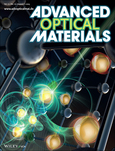
S. Rotta Loria, B. R. Bricchi, A. Schirato, L. Mascaretti, C. Mancarella, A. Naldoni, A. Li Bassi, G. Della Valle and M. Zavelani‐Rossi, "Unfolding the Origin of the Ultrafast Optical Response of Titanium Nitride," ADVANCED OPTICAL MATERIALS, vol. 11, iss. 15, pp. 2300333, 2023.
DOI: 10.1002/adom.202300333, IF = 10.050
Abstract: Ultrafast plasmonics is driving growing interest for the search of novel plasmonic materials, overcoming the main limitations of noble metals. In this framework, titanium nitride (TiN) is brought in the spotlight for its refractory properties combined with an extremely fast electron-lattice cooling time (<100 fs) compared to gold (≈ 1 ps). Despite the results reported in literature, a clear-cut explanation of the origin of the ultrafast and giant optical response of TiN-based materials upon excitation with femtosecond laser pulses is still missing. To address this issue, an original model is introduced, capable of unfolding the modulation of TiN optical properties on a broad bandwidth, starting from the variations of electronic and lattice temperatures following ultrafast photoexcitation. The numerical analysis is validated on ultrafast pump–probe spectroscopy experiments on a simple structure, a TiN film on glass. This approach enables a complete disentanglement of the interband and intraband contributions to the permittivity modulation. Moreover, it is also shown that, varying the synthesis conditions of the TiN film, not only the static, but also the dynamical optical response can be efficiently tuned. These findings pave the way for a breakthrough in the field: the design of TiN-based ultrafast nanodevices for all-optical modulation of light.
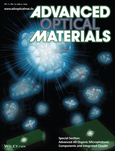
L. Zdražil, D. Panáček, V. Šedajová, Z. Baďura, M. Langer, M. Medveď, M. Paloncýová, M. Scheibe, S. Kalytchuk, G. Zoppellaro, Š. Kment, A. Cadranel, A. Bakandritsos, D. M. Guldi, M. Otyepka and R. Zbořil, "Carbon Dots Enabling Parts‐Per‐Billion Sensitive and Ultraselective Photoluminescence Lifetime‐Based Sensing of Inorganic Mercury," ADVANCED OPTICAL MATERIALS, vol. 11, iss. 21, pp. 202300750, 2023.
DOI: 10.1002/adom.202300750, IF = 10.050
Abstract: One of the UN Sustainable Development Goals is to ensure universal access to clean drinking water. Among the various types of water contaminants, mercury (Hg) is considered to be one of the most dangerous ones. It is mostly its immense toxicity and vast environmental impact that stand out. To tackle the issue of monitoring water quality, a nanosensor based on carbon dots (CDs) is developed, whose surface is functionalized with carboxylic groups. CDs show Hg2+ concentration-dependent photoluminescence (PL) lifetimes along with an ultrahigh sensitivity and selectivity. The selectivity of PL quenching by Hg2+ is rationalized by performing light-induced electron paramagnetic resonance (LEPR) spectroscopy showing significant perturbation of the CD photoexcited state upon Hg2+ binding. The experimental findings are supported by time-dependent density functional theory (TD-DFT) calculations. These unveiled the emergence of a low-lying charge transfer state involving a vacant 6s orbital of Hg2+ stabilized by relativistic effects.
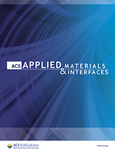
A. K. K. Padinjareveetil, J. V. Perales-Rondon, D. Zaoralová, M. Otyepka, O. Alduhaish and M. Pumera, "Fe-MOF Catalytic Nanoarchitectonic toward Electrochemical Ammonia Production," ACS APPLIED MATERIALS & INTERFACES, vol. 15, iss. 40, pp. 47294–47306, 2023.
DOI: 10.1021/acsami.3c12822, IF = 10.383
Abstract: Electrochemical reduction of nitrate into ammonia has lately been identified as one among the promising solutions to address the challenges triggered by the growing global energy demand. Exploring newer electrocatalyst materials is vital to make this process effective and feasible. Recently, metal–organic framework (MOF)-based catalysts are being well investigated for electrocatalytic ammonia synthesis, accounting for their enhanced structural and compositional integrity during catalytic reduction reactions. In this study, we investigate the ability of the PCN-250-Fe3 MOF toward ammonia production in its pristine and activated forms. The activated MOF catalyst delivered a faradaic efficiency of about 90% at −1 V vs RHE and a yield rate of 2.5 × 10–4 mol cm–2 h–1, while the pristine catalyst delivered a 60% faradaic efficiency at the same potential. Theoretical studies further provide insights into the nitrate reduction reaction mechanism catalyzed by the PCN-250-Fe3 MOF catalyst. In short, simpler and cost-effective strategies such as pretreatment of electrocatalysts have an upper hand in aggravating the intrinsic material properties, for catalytic applications, when compared to conventional material modification approaches.
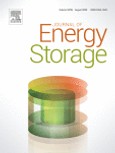
P. Saharan, M. Singh, A. Gupta, C. Kumar, S. Sundriyal and S. Dhakate, "Conducting co-polymer derived N, S co-doped metal-free hierarchical nanoporous carbon for robust electrochemical capacitor," JOURNAL OF ENERGY STORAGE, vol. 73, pp. 108928, 2023.
DOI: 10.1016/j.est.2023.108928, IF = 8.907
Abstract: The present investigation reported metal-free hierarchical porous and robust Nitrogen (N), Sulphur (S) co-doped carbon (NS-CoP@C) electrode for supercapacitor application. The NS-CoP@C was synthesized by single-step carbonization and activation of thiourea co-doped aniline-pyrrole co-polymer (CoP). The thiourea acted as a doping as well as activating agent. The data of three different electrode materials PANI-PPy co-polymer (CoP), PANI-PPy co-polymer derived Carbon (CoP@C) and N, S co-doped carbon derived from PANI-PPy co-polymer (NS-CoP@C) are compared in the present report. The electrode materials were initially characterized by various spectroscopic techniques. It is observed that among the three electrode material, NS-CoP@C possess higher specific surface area (SSA), high pore volume and hierarchal porous structure with a better mesopore-to-micropore volume ratio. In a three-electrode system, NS-CoP@C possesses a high specific capacitance of 344.2 F/g @ 0.5A/g. Moreover, NS-CoP@C electrode was used to fabricate an all solid-state (PVA-1 M H2SO4 polymer gel electrolyte) and aqueous (1 M H2SO4 electrolyte) symmetrical supercapacitor devices in the two-electrode system. This NS-CoP@C electrode was used as both positive and negative electrode material in both types of devices. Among them, the solid-state device operates at a wide potential window of 2 V, as a consequence delivering an implausible energy and power density of 45.25 Wh/kg and 1025.64 W/kg while maintaining a capacity retention of 90.1 % even after 8500 charge-discharge cycles. Hence, the excellent performance of conducting PANI-PPy co-polymer-derived N, S co-doped carbon paved new ground for developing an alternative electrode for futuristic energy storage devices.
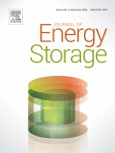
P. Dubey, V. Shrivastav, P. H. Maheshwari, M. Hołdyński, A. Krawczyńska and S. Sundriyal, "Comparative study of different metal-organic framework electrodes synthesized using waste PET bottles for supercapacitor applications," JOURNAL OF ENERGY STORAGE, vol. 68, pp. 107828, 2023.
DOI: 10.1016/j.est.2023.107828, IF = 8.907
Abstract: The conversion of plastic waste into high-value metal-organic framework (MOF) materials has currently grabbed the attention as an important research area for mitigating environmental and economic issues. Due to their large surface area and high porosity, MOFs have a significant advantage as supercapacitor electrode material. In this study, MOFs (Cu-MOF, Zr-MOF, and Ti-MOF) were produced from plastic wastes (PET bottles) using hydrothermal approach. These MOFs were tested electrochemically in 1 M H2SO4 electrolyte using three-electrode setup. Among them, Cu-MOF (104.8 F/g at 0.5 A/g) showed higher capacitance and increased diffusion contribution (78.4 %) than its counterparts Zr-MOF (70.5 F/g at 0.5 A/g; 70.4 %) and Ti-MOF (55.5 F/g at 0.5 A/g; 67.5 %). Further, solid-state symmetrical supercapacitor devices have been assembled using all the plastic wastes derived MOFs viz. Cu-MOF//Cu-MOF, Zr-MOF//Zr-MOF, and Ti-MOF//Ti-MOF. Among them, Cu-MOF//Cu-MOF symmetric supercapacitor device performed better than the others by rendering energy density of 18.2 Wh/kg at 825 W/kg power density along with a cyclic stability of 87 % after 10,000 charge-discharge cycles. These studies open new avenues to utilize waste PET bottles to synthesize high functional MOFs for next generation supercapacitors.
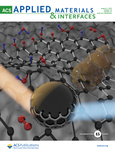
M. Shahrezaei, S. M. H. Hejazi, H. Kmentova, V. Sedajova, R. Zboril, A. Naldoni and S. Kment, "Ultrasound-Driven Defect Engineering in TiO2–x Nanotubes─Toward Highly Efficient Platinum Single Atom-Enhanced Photocatalytic Water Splitting," ACS APPLIED MATERIALS & INTERFACES, vol. 15, iss. 31, pp. 37976-37985, 2023.
DOI: 10.1021/acsami.3c04811, IF = 8.663
Abstract: Single-atom catalysts (SACs) have demonstrated superior catalytic activity and selectivity compared to nanoparticle catalysts due to their high reactivity and atom efficiency. However, stabilizing SACs within hosting substrates and their controllable loading preventing single atom clustering remain the key challenges in this field. Moreover, the direct comparison of (co-) catalytic effect of single atoms vs nanoparticles is still highly challenging. Here, we present a novel ultrasound-driven strategy for stabilizing Pt single-atomic sites over highly ordered TiO2 nanotubes. This controllable low-temperature defect engineering enables entrapment of platinum single atoms and controlling their content through the reaction time of consequent chemical impregnation. The novel methodology enables achieving nearly 50 times higher normalized hydrogen evolution compared to pristine titania nanotubes. Moreover, the developed procedure allows the decoration of titania also with ultrasmall nanoparticles through a longer impregnation time of the substrate in a very dilute hexachloroplatinic acid solution. The comparison shows a 10 times higher normalized hydrogen production of platinum single atoms compared to nanoparticles. The mechanistic study shows that the novel approach creates homogeneously distributed defects, such as oxygen vacancies and Ti3+ species, which effectively trap and stabilize Pt2+ and Pt4+ single atoms. The optimized platinum single-atom photocatalyst shows excellent performance of photocatalytic water splitting and hydrogen evolution under one sun solar-simulated light, with TOF values being one order of magnitude higher compared to those of traditional thermal reduction-based methods. The single-atom engineering based on the creation of ultrasound-triggered chemical traps provides a pathway for controllable assembling stable and highly active single-atomic site catalysts on metal oxide support layers.
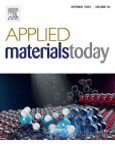
J. Dzíbelová, S. H. Hejazi, V. Šedajová, D. Panáček, P. Jakubec, Z. Baďura, O. Malina, J. Kašlík, J. Filip, Š. Kment, M. Otyepka and R. Zbořil, "Hematene: A sustainable 2D conductive platform for visible-light-driven photocatalytic ammonia decomposition," APPLIED MATERIALS TODAY, vol. 34, pp. 101881, 2023.
DOI: 10.1016/j.apmt.2023.101881, IF = 8.663
Abstract: The emerging class of 2D non-van der Waals (n-vdW) materials, including 2D iron oxides, possesses unique properties and high applicability, making them attractive for various technological applications. However, the synthesis of these materials through a scalable and eco-friendly method remains a challenge, as most known chemical exfoliation processes require toxic organic solvents. In this study, we report a green synthesis of 2D hematene (α-Fe2O3) using an ultrasound-supported exfoliation method of earth-abundant iron oxide ore in a pure aqueous solution. The resulting hematene sheets, only a few nanometers thick, exhibit superior electrochemical performance in terms of charge transfer processes, making them ideal for photocatalytic applications. By doping a conductive hematene substrate with ruthenium, we demonstrate a synergistic effect for generating electrons and holes under visible light irradiation. Using this approach, we successfully decomposed ammonia into hydrogen and nitrogen, highlighting the potential of this novel class of environmentally-friendly photocatalysts for clean energy production. Overall, our water-assisted scalable synthesis of hematene offers a promising strategy for producing efficient and sustainable photocatalysts.
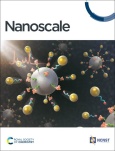
M. Langer, L. Zdražil, M. Medved and M. Otyepka, "Communication of Molecular Fluorophores with Other Photoluminescence Centres in Carbon Dots," NANOSCALE, vol. 15, iss. 8, pp. 4022-4032, 2023.
DOI: 10.1039/d2nr05114a, IF = 8.307
Abstract:
The establishment of structure-photoluminescence (PL) relationships remains an ultimate challenge in the field of carbon dots (CDs). It is now commonly understood that various structural domains may evolve during the preparation of CDs; nonetheless, we are still far from capturing the specific features that determine the overall PL of CDs. Although the core, surface and molecular states are usually considered the three main sources of PL, it is not known to which extent they interact and/or affect one another. Expectedly, the communication between the different PL centres depends on the mutual arrangement and the type of linking. To gain insights into such a communication, time-dependent density functional theory (TD-DFT) calculations were performed for several (N-doped/O-functionalized) polyaromatic hydrocarbons (PAHs) as representative models for the core/surfaces PL states and the prototypical molecular fluorophore (MF) 5-oxo-1,2,3,5-tetrahydroimidazo-[1,2-α]-pyridine-7-carboxylic acid (IPCA), considering different interaction modes, namely hydrogen bonded and stacked complexes as well as covalently bonded and fused structures. Our results revealed that each of the studied arrangements in some way supported the communication between the PL centres. The deactivation pathways typically involve multiple charge and energy transfer events that can promote the formation of charge separated states and/or lead to the activation of other PL centres in CDs. Depending on the arrangement, the doping pattern and surface functionalization, both the CD core and the MF can act as an electron donor or acceptor, which could help to design CDs with desirable hole–electron surface/core characteristics.
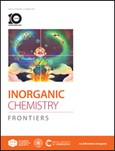
T. Li, S. Yang, Y. Zuo, W. Li, H. Yue, Š. Kment and Y. Chai, "Hydrogen bond stabilized β-Ni(OH)x–SO4 interlaminar materials for highly active supercapacitors," INORGANIC CHEMISTRY FRONTIERS, vol. 10, iss. 3, pp. 1001-1010, 2023.
DOI: 10.1039/d2qi01992b, IF = 7.779
Abstract: To improve the intrinsic property of Ni(OH)2 for advanced supercapacitors, structural and valence engineering are combined here to prepare porous β-Ni(OH)x–SO4 (NSO) interlaminar materials. NSO has an expanded interplanar spacing and in-plane porous channels, thus offering a 3D accessible structure for the charging and discharging process. The intercalation of SO42− can retain the layer spacing of NSO through hydrogen bond during the charge transport and effectively drive electrons close to the Fermi level of NSO, which significantly enhances the stability and conductivity of the sample. The rigid interlayer space and in-plane channels enable NSO to exhibit a high specific capacity of 212.5 mA h g−1 at 3 A g−1. The assembled asymmetric supercapacitor device shows a high energy density of 41.2 W h kg−1 at 796.9 W kg−1 and maintains 86.8% capacity retention after 10 000 cycles at 4 A g−1.
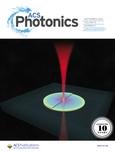
M. Afshar, A. Schirato, L. Mascaretti, S. M. H. Hejazi, M. Shahrezaei, G. Della Valle, P. Fornasiero, Š. Kment, A. Alabastri and A. Naldoni, "Nanoporous Titanium Oxynitride Nanotube Metamaterials with Deep Subwavelength Heat Dissipation for Perfect Solar Absorption," ACS PHOTONICS, vol. 10, iss. 9, pp. 3291-3301, 2023.
DOI: 10.1021/acsphotonics.3c00731, IF = 7.077
Abstract: We report a quasi-unitary broadband absorption over the ultraviolet–visible–near-infrared range in spaced high aspect ratio, nanoporous titanium oxynitride nanotubes, an ideal platform for several photothermal applications. We explain such an efficient light–heat conversion in terms of localized field distribution and heat dissipation within the nanopores, whose sparsity can be controlled during fabrication. The extremely large heat dissipation could not be explained in terms of effective medium theories, which are typically used to describe small geometrical features associated with relatively large optical structures. A fabrication-process-inspired numerical model was developed to describe a realistic space-dependent electric permittivity distribution within the nanotubes. The resulting abrupt optical discontinuities favor electromagnetic dissipation in the deep sub-wavelength domains generated and can explain the large broadband absorption measured in samples with different porosities. The potential application of porous titanium oxynitride nanotubes as solar absorbers was explored by photothermal experiments under moderately concentrated white light (1–12 Suns). These findings suggest potential interest in realizing solar-thermal devices based on such simple and scalable metamaterials.
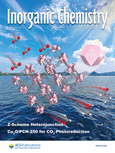
M. Medvedíková, V. Ranc, J. Vančo, Z. Trávníček and P. Anzenbacher, "Highly Cytotoxic Copper(II) Mixed-Ligand Quinolinonato Complexes: Pharmacokinetic Properties and Interactions with Drug Metabolizing Cytochromes P450," PHARMACEUTICS, vol. 15, iss. 4, pp. 1314, 2023.
DOI: 10.3390/pharmaceutics15041314, IF = 6.525
Abstract:
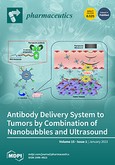
Z. Trávníček, T. Malina, J. Vančo, M. Šebela and Z. Dvořák, "Heteroleptic Copper(II) Complexes Containing 2′-Hydroxy-4-(Dimethylamino)Chalcone Show Strong Antiproliferative Activity," PHARMACEUTICS, vol. 15, iss. 2, pp. 307, 2023.
DOI: 10.3390/pharmaceutics15020307, IF = 6.525
Abstract: Text: A series of six heteroleptic copper(II) complexes with 2′-hydroxy-4-(dimethylamino)chalcone (HL) with the composition [Cu(N-N)(L)]NO3 (1–6), where N-N stands for dmbpy = 5,5′-dimethyl-2,2′-bipyridine (1), bphen = 4,7-diphenyl-1,10-phenanthroline (2), dbbpy = 4,4′-di-tert-butyl-2,2′-bipyridine (3), nphen = 5-nitro-1,10-phenanthroline (4), bpy = 2,2′-bipyridine, (5), and dpa = 2,2′-dipyridylamine (6), was prepared and thoroughly characterized. The in vitro cytotoxicity screening on eight human cancer cell lines identified complex 2, containing the bulkiest N-donor ligands (bphen) as highly cytotoxic against cancer cells, with IC50 values ranking from 1.0 to 2.3 μM, with good selectivity and low toxicity against healthy human fetal lung fibroblasts MRC-5. The cell-based assays, involving the most effective complex 2 in A2780 cancer cells, revealed its strong pro-apoptotic effects based on the effective activation of caspases 3/7, ROS overproduction, and autophagy in the A2780 cells while not impeding the cell cycle and mitochondrial membrane functions. The cellular uptake studies in A2780 and 22Rv1 cells uncovered no intracellular transport of the cationic complex 2, supporting the hypothesis that the in vitro anticancer effects of complex 2 are based on the combined extrinsic activation of apoptosis and autophagy induction.
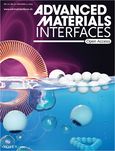
S. Sundriyal, P. Dubey, Mansi, B. Gupta, M. Holdynski, M. Bonarowska, A. Deep, V. Shrivastav and W. Nogala, "Zeolitic Imidazole Framework Derived Cobalt Phosphide/Carbon Composite and Waste Paper Derived Porous Carbon for High‐Performance Supercapattery," ADVANCED MATERIALS INTERFACES, vol. 10, iss. 31, pp. 2300401, 2023.
DOI: 10.1002/admi.202300401, IF = 6.389
Abstract: Metal–organic frameworks (MOFs) derived nanostructures receive immense research focus due to its high porosity, conductivity, and structural tailrolability features. In this work, porous Zeolitic Imidazole Framework-67 (ZIF-67) to synthesize cobalt phosphide/carbon composite (ZCoPC) that serves as a positive electrode is utilized. Furthermore, porous and conductive office paper derived carbon (OPC) are utilized as a negative electrode to make a hybrid system. The metalloid characteristics, high conductivity, and good porosity of ZCoPC material makes it a high-performance battery like electrode. ZCoPC electrode achieves maximum specific capacity of 192.6 mAh g−1 at 1 A g−1 using 1 m potassium hydroxide (KOH) electrolyte. Furthermore, surface and diffusion charge participation investigation are also undergone for ZCoPC electrode that helps in determining the actual charge dynamics occurring in the electrode. In addition, a supercapattery device is assembled using ZCoPC as battery electrode and OPC as supercapacitor electrode. The as fabricated OPC//ZCoPC hybrid supercapattery device delivers extraordinary energy density of 31.6 Wh kg−1 with a power density of 700 W kg−1 and also a long cycle life of 92.3% even after 10,000 charge–discharge cycles. Hence, these outcomes demonstrate that the synergy of porous MOF derived metal phosphide and OPC electrodes are beneficial for supercapattery devices.
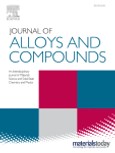
O. Životský, L. Gembalová, Y. Jirásková, I. Szurman, T. Čegan, O. Malina, J. Kuriplach and J. Čížek, "Microstructural and magnetic properties of Mn2FeSi and Mn2FeAl alloys prepared in bulk form," JOURNAL OF ALLOYS AND COMPOUNDS, vol. 947, pp. 169672, 2023.
DOI: 10.1016/j.jallcom.2023.169672, IF = 6.371
Abstract: Microstructural and magnetic properties of the Mn2FeSi and Mn2FeAl alloys prepared in the bulk form have been investigated. Cylinder-shaped ingots produced by induction melting technique were analyzed in as-quenched state and additionally annealed at 773 K for 5 days in the protective argon atmosphere. The results show that Si and Al have different effects on the microstructural and magnetic properties of the alloys. The Mn2FeAl ingots are single-phase both before and after annealing, and their diffractograms surprisingly correspond not to the Heusler (L21 or XA) but to the primitive cubic β-Mn structure. Conversely, Mn2FeSi alloys show a two-phase behavior in the as-quenched state. From results of X-ray diffraction it was not possible to judge whether Mn2FeSi alloy has the inverse-Heusler (XA) or full Heusler (L21) structure. Annealing of Mn2FeSi leads to the formation of multiple phases. The EDX chemical area analyses resulted in only slight deviations of compositions compared to the nominal ones. The lattice parameters of 0.5672 nm and 0.6339 nm were estimated for the Mn2FeSi and Mn2FeAl samples from X-ray diffraction measurements. From the magnetic viewpoint, all samples are paramagnetic at room temperature and transform into antiferromagnetic state at the N é el temperatures about 50 K and 36 K for Mn2FeSi and Mn2FeAl, respectively. The negative Curie temperatures determined at all samples by Curie-Weiss law indicate an antiferromagnetic ordering of spins. Positron annihilation investigations revealed that Mn2FeSi contains a high concentration of vacancies. The local chemical environment of vacancies characterized by coincidence Doppler broadening is compatible with L21 rather than with XA structure. In contrast vacancy concentration in Mn2FeAl is very low and almost all positrons are annihilated in the free state.
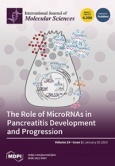
Z. Trávníček, J. Vančo, J. Belza, J. Hošek, Z. Dvořák, R. Lenobel, I. Popa, K. Šmejkal and P. Uhrin, "The Gold(I) Complex with Plant Hormone Kinetin Shows Promising In Vitro Anticancer and PPARγ Properties," INTERNATIONAL JOURNAL OF MOLECULAR SCIENCES, vol. 24, iss. 3, pp. 2293, 2023.
DOI: 10.3390/ijms24032293, IF = 6.208
Abstract: Abstract Motivated by the clinical success of gold(I) metallotherapeutic Auranofin in the effective treatment of both inflammatory and cancer diseases, we decided to prepare, characterize, and further study the [Au(kin)(PPh3)] complex (1), where Hkin = kinetin, 6-furfuryladenine, for its in vitro anti-cancer and anti-inflammatory activities. The results revealed that the complex (1) had significant in vitro cytotoxicity against human cancer cell lines (A2780, A2780R, PC-3, 22Rv1, and THP-1), with IC50 ≈ 1–5 μM, which was even significantly better than that for the conventional platinum-based drug Cisplatin while comparable with Auranofin. Although its ability to inhibit transcription factor NF-κB activity did not exceed the comparative drug Auranofin, it has been found that it is able to positively influence peroxisome-proliferator-activated receptor-gamma (PPARγ), and as a consequence of this to have the impact of moderating/reducing inflammation. The cellular effects of the complex (1) in A2780 cancer cells were also investigated by cell cycle analysis, induction of apoptosis, intracellular ROS production, activation of caspases 3/7 and disruption of mitochondrial membrane potential, and shotgun proteomic analysis. Proteomic analysis of R2780 cells treated with complex (1) and starting compounds revealed possible different places of the effect of the studied compounds. Moreover, the time-dependent cellular accumulation of copper was studied by means of the mass spectrometry study with the aim of exploring the possible mechanisms responsible for its biological effects.
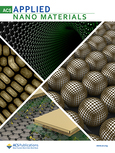
A. Kaur, V. Shrivastav, P. Dubey, I. Mudahar, S. Sundriyal and S. Mishra, "Surface and Diffusion Characteristics of Nanoporous UiO-66/Pineapple Peel-Derived Carbon Composites for Solid-State Supercapacitors," ACS APPLIED NANO MATERIALS, 2023.
DOI: 10.1021/acsanm.3c01897, IF = 6.140
Abstract: Supercapacitors (SCs) based on hierarchical nanoporous framework composite materials and aqueous electrolytes are recent interests for the researchers. The structure of UiO-66 exhibits extraordinary stability and high specific surface area, but the specific capacitance of UiO-66 (139.4 F g–1 at 2 A g–1) is limited due to its moderately conducting nature. Therefore, we report a method to modify UiO-66 with pineapple peel derived activated carbon (PA-AC) to form a facile composite. Owing to the high specific surface area and good conductivity of the UiO-66/PA-AC composite, a high specific capacitance of 295.9 F g–1 at 2 A g–1 has been achieved and is well suited for supercapacitor applications. At the maximum charging voltage range of 0–1.8 V, the UiO-66/PA-AC//UiO-66/PA-AC symmetrical SC delivered a maximum energy density of 29.6 Wh kg–1 at a power density of 170 W kg–1. After 5000 repeated charge–discharge cycles at 30 A g–1, the specific capacitance of the device increased from 100% to 120% of its initial specific capacitance. This study emphasized the potential importance of incorporating MOFs into pores of biowaste derived carbon as a strategy for enhancing the charge storage kinetics of moderately conducting MOFs.
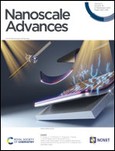
G. Niraula, D. Toneto, G. F. Goya, G. Zoppellaro, J. A. H. Coaquira, D. Muraca, J. C. Denardin, T. P. Almeida, M. Knobel, A. I. Ayesh and S. K. Sharma, "Observation of magnetic vortex configuration in non-stoichiometric Fe3O4 nanospheres," NANOSCALE ADVANCES, vol. 5, iss. 18, pp. 5015-5028, 2023.
DOI: 10.1039/d3na00433c, IF = 5.598
Abstract: Theoretical and micromagnetic simulation studies of magnetic nanospheres with vortex configurations suggest that such nanostructured materials have technological advantages over conventional nanosystems for applications based on high-power-rate absorption and subsequent emission. However, full experimental evidence of magnetic vortex configurations in spheres of submicrometer size is still lacking. Here, we report the microwave irradiation fabrication of Fe3O4 nanospheres and establish their magnetic vortex configuration based on experimental results, theoretical analysis, and micromagnetic simulations. Detailed magnetic and electrical measurements, together with Mössbauer spectroscopy data, provide evidence of a loss of stoichiometry in vortex nanospheres owing to the presence of a surface oxide layer, defects, and a higher concentration of cation vacancies. The results indicate that the magnetic vortex spin configuration can be established in bulk spherical magnetite materials. This study provides crucial information that can aid the synthesis of magnetic nanospheres with magnetically tailored properties; consequently, they may be promising candidates for future technological applications based on three-dimensional magnetic vortex structures.
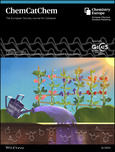
W. Raza, A. B. Tesler, A. Mazare, O. Tomanec, S. Kment and P. Schmuki, "Pt Single Atoms as Co‐Catalysts on CdS‐Sensitized Single‐Crystalline TiO2 Nanoflakes for Enhanced Visible Light Photocatalytic H2 Generation," CHEMCATCHEM, vol. 15, iss. 12, pp. e202300327, 2023.
DOI: 10.1002/cctc.202300327, IF = 5.497
Abstract: Studies on single-atom catalysts (SACs) with individually isolated metal atoms anchored on specific supports have gained great interest in photocatalysis due to their enhanced catalytic activity and optimal atom utilization. By providing an optimized number of active sites and enhancing their intrinsic activity, SACs afford a distinctive platform for photocatalysis at the atomic level. In this study, we investigate the photocatalytic H2 generation of Pt single atoms (SAs) anchored on CdS-sensitized single crystalline anatase TiO2 nanoflakes (ATNF) in the visible spectral range. Vertically-aligned ATNF were synthesized on fluorine-doped tin oxide substrates by a hydrothermal process, which were further sensitized by CdS nanoislands (NIs) using the successive ionic layer adsorption and reaction (SILAR) technique. Finally, a reactive-deposition approach was used to successfully anchor Pt SAs on CdS-sensitized ATNF. Under optimized conditions, the highest photocatalytic H2 evolution on Pt-anchored single atom CdS sensitized ATNF was 17.8 μL h−1 under visible light illumination, which is 15.8, 7.5, and 6.7-fold higher than bare CdS/FTO, PtSA/CdS/FTO, and ATNF, respectively. Overall, the density of Pt SAs plays a vital role via strong trapping of the photogenerated electrons and significantly improves the efficiency of electron-hole separation, making PtSA/ATNF efficient solar-driven photocatalysts.
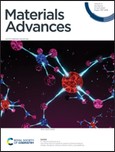
R. Anwar, J. Navrátil, R. K. Vijayaraghavan, P. J. McNally, M. Otyepka, P. Błoński and M. V. Sofianos, "Upcycling natural Limestone waste for thermochemical energy storage by utilising tailored CaZrO3 nanoadditives," MATERIALS ADVANCES, vol. 4, iss. 8, pp. 1905-1915, 2023.
DOI: 10.1039/d2ma01083f, IF = 5.360
Abstract: The development of long-term renewable energy storage systems is crucial for decarbonising the energy sector and enabling the transition to a sustainable energy future. Thermochemical energy storage (TCES) systems are well suited for long-term renewable energy storage as the materials used in these systems have high energy densities, and long storage duration. Among the plethora of TCES materials, calcium carbonate (Limestone) is of particular interest since it exhibits a high enthalpy of reaction, and it is earth-abundant. The main problem with Limestone inhibiting its commercial application for long-term renewable energy storge is its deteriorating cycling performance after several energy charge/discharge cycles. In this study, two CaZrO3 nanoadditives with two different Ca : Zr ratios and tailored oxygen vacancies were synthesised by a precipitation method, and mixed with Limestone waste at three weight concentrations (5, 10 and 20 wt%). Their phase, chemical state and morphology were determined by XRD, XPS and TEM, respectively. The cycling performance of the mixture samples was determined through thermogravimetric analysis. The best performing sample was the one mixed with 20% CaZrO3 nanoadditives, which contained a large number of oxygen vacancies and thus had enhanced ionic conductivity, as confirmed by density functional theory (DFT) calculations. This sample exhibited the best effective conversion and the highest energy density values of 0.7 and 2640 kJ kg−1, respectively, after 40 cycles.

P. Dubey, V. Shrivastav, M. Jain, K. K. Pant, P. H. Maheshwari and S. Sundriyal, "Facile Synthesis of Pineapple Waste-Derived Carbon and Polyaniline Composite for High-Energy-Density Asymmetric Supercapacitors," ENERGY & FUELS, vol. 37, iss. 12, pp. 8659-8671, 2023.
DOI: 10.1021/acs.energyfuels.3c00995, IF = 5.300
Abstract: Pineapple peel has been chosen as a biowaste precursor to synthesize activated carbon via KOH activation at 800 °C (PP-800). Further, the in situ chemical oxidation method was used to synthesize a composite of PP-800 with polyaniline (PANI). The successful formation of the composite (PP-800/PANI) was confirmed via X-ray diffraction (XRD), and Raman and Fourier-transform infrared (FTIR) spectra. PP-800/PANI when tested in 1 M H2SO4 in a three-electrode configuration showed a higher specific capacitance (377 F/g) than that of PP-800 (328 F/g) and PANI (92.4 F/g) at 2 A/g. This is due to the significant enhancement in the diffusion contribution for PP-800/PANI (86.25%) than that of PP-800 (61.7%) and PANI (49.9%) counterparts at 20 mV/s, which leads to the maximum utilization of the electrochemical surface area. Further, an asymmetrical supercapacitor device, PP-800/PANI//PP-800, was fabricated, which delivered a high energy density of 51.2 Wh/kg at a decent power density of 380 W/kg with 90% cyclic stability after 10,000 charge–discharge cycles.
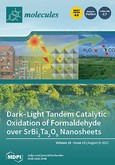
N. Lalioti, A. Charitos, J. Parthenios, O. Malina, M. Polaskova, M. Petr and V. Tangoulis, "Observation of Two-Step Spin Transition in Graphene Oxide-Based Hybrids with Iron(II) 4-amino-1,2,4-triazole Spin Crossover Nanoparticles," MOLECULES, vol. 28, iss. 15, pp. 5816, 2023.
DOI: 10.3390/molecules28155816, IF = 4.927
Abstract: A novel experimental protocol based on a reverse micellar method is presented for the synthesis of graphene oxide (GO)-based hybrids with spin crossover nanoparticles (SCO NPs) of the 1D iron(II) coordination polymer with the formula [Fe(NH2trz)3](Br2). By introducing different quantities of 0.5% and 1.0% of GO (according to iron(II)) into the aqueous phase, two hybrids, NP4 and NP5, were synthesized, respectively. The morphological homogeneity of the NPs on the surface of the GO flakes is greatly improved in comparison to the pristine [Fe(NH2trz)3](Br2) NPs. From the magnetic point of view and at a low magnetic sweep rate of 1 K/min, a two-step hysteretic behavior is observed for NP4 and NP5, where the onset of the low-temperature second step appeared at 40% and 30% of the HS fraction, respectively. For faster sweep rates of 5–10 K/min, the two steps from the cooling branch are progressively smeared out, and the critical temperatures observed are T1/2↑ = 343 K and T1/2↓ = 288 K, with a thermal width of 55 K for both NP4 and NP5. A Raman laser power-assisted protocol was used to monitor the thermal tolerance of the hybrids, while XPS analysis revealed electronic interactions between the SCO NPs and the GO flakes.
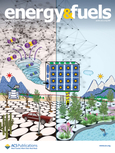
A. Kaur, V. Shrivastav, P. Dubey, A. Deep, I. Mudahar, S. Sundriyal and S. Mishra, "Waste Paper-Derived Porous Carbon Incorporated with Mesoporous ZIF-8 Crystals for Symmetrical Supercapacitors," ENERGY & FUELS, vol. 37, iss. 15, pp. 11376-11387, 2023.
DOI: 10.1021/acs.energyfuels.3c01528, IF = 4.654
Abstract: Activated carbon (AC) is a low-cost porous material with high conductivity and a specific surface area. Recently, commercially available AC has been replaced by waste-derived activated carbons (WDACs) as they are renewable, cost-effective, and eco-friendly. The synthesis of metal–organic frameworks (MOFs) embedded in the WDAC matrix as a composite electrode is carried out for energy storage applications. Briefly, the zinc-based zeolitic imidazole framework (ZIF-8) is combined with waste paper-derived activated carbon (PAC-800) and used to fabricate a solid-state symmetrical supercapacitor that delivered an energy density of 37.1 Wh kg–1 at a power density of 880.1 W kg–1. Compared to pristine materials (ZIF-8 and PAC-800 alone), the electrochemical performance of the PAC-800/ZIF-8 composite electrode is greatly enhanced due to the mesoporous nature of ZIF-8.
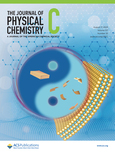
O. Henrotte, Š. Kment and A. Naldoni, "Interfacial States in Au/Reduced TiO2 Plasmonic Photocatalysts Quench Hot-Carrier Photoactivity," THE JOURNAL OF PHYSICAL CHEMISTRY C, vol. 127, iss. 32, pp. 15861-15870, 2023.
DOI: 10.1021/acs.jpcc.3c04176, IF = 4.177
Abstract: Understanding the interface of plasmonic nanostructures is essential for improving the performance of photocatalysts. Surface defects in semiconductors modify the dynamics of charge carriers, which are not well understood yet. Here, we take advantage of scanning photoelectrochemical microscopy (SPECM) as a fast and effective tool for detecting the impact of surface defects on the photoactivity of plasmonic hybrid nanostructures. We evidenced a significant photoactivity activation of TiO2 ultrathin films under visible light upon mild reduction treatment. Through Au nanoparticle (NP) arrays deposited on different reduced TiO2 films, the plasmonic photoactivity mapping revealed the effect of interfacial defects on hot charge carriers, which quenched the plasmonic activity by (i) increasing the recombination rate between hot charge carriers and (ii) leaking electrons (injected and generated in TiO2) into the Au NPs. Our results show that the catalyst’s photoactivity depends on the concentration of surface defects and the population distribution of Au NPs. The present study unlocks the fast and simple detection of the surface engineering effect on the photocatalytic activity of plasmonic semiconductor systems.
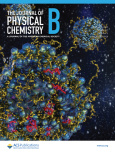
M. Paloncýová, M. Šrejber, P. Čechová, P. Kührová, F. Zaoral and M. Otyepka, "Atomistic Insights into Organization of RNA-Loaded Lipid Nanoparticles," THE JOURNAL OF PHYSICAL CHEMISTRY B, vol. 127, iss. 5, pp. 1158-1166, 2023.
DOI: 10.1021/acs.jpcb.2c07671, IF = 3.466
Abstract: RNA-based therapies have shown promise in a wide range of applications, from cancer therapy, treatment of inherited diseases to vaccination. Encapsulation of RNA into ionizable lipid (IL) containing lipid nanoparticles (LNPs) has enabled its safe and targeted delivery. We present here the simulations of the self-assembly process of pH-sensitive RNA-carrying LNPs and their internal morphology. At low pH, the simulations confirm a lipid core encapsulating RNA in the hexagonal phase. Our all-atom and coarse-grained simulations show that an RNA molecule inside an LNP is protected from interactions with ions by being enveloped in the charged ILs. At neutral pH, representing the environment after LNP administration into human tissues, LNPs expelled most of the encapsulated RNA and water and formed separate bulk IL-rich and ordered the helper-lipid-rich phase. Helper lipids arranged themselves to be in contact with RNA or water. The presented models provide atomistic understanding of the LNP structure and open a way to investigate them in silico, varying the LNP composition or interacting with other biostructures aiming at increasing the efficiency of RNA-based medicine.
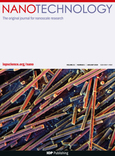
L. Mascaretti, C. Mancarella, M. Afshar, Š. Kment, A. L. Bassi and A. Naldoni, "Plasmonic titanium nitride nanomaterials prepared by physical vapor deposition methods," NANOTECHNOLOGY, vol. 34, iss. 50, pp. 502003, 2023.
DOI: 10.1088/1361-6528/acfc4f, IF = 3.953
Abstract: Titanium nitride (TiN) has recently emerged as an alternative to coinage metals to enable the development of integrated plasmonic devices at visible and medium-infrared wavelengths. In this regard, its optical performance can be conveniently tuned by tailoring the process parameters of physical vapor deposition methods, such as magnetron sputtering and pulsed laser deposition (PLD). This review first introduces the fundamental features of TiN and a description on its optical properties, including insights on the main experimental techniques to measure them. Afterwards, magnetron sputtering and PLD are selected as fabrication techniques for TiN nanomaterials. The fundamental mechanistic aspects of both techniques are discussed in parallel with selected case studies from the recent literature, which elucidate the critical advantages of such techniques to engineer the nanostructure and the plasmonic performance of TiN.
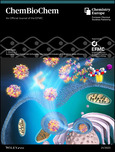
R. Coulon, B. Papoušková, E. Mohammadi, M. Otyepka, S. Wunnava, J. Šponer and J. E. Šponer, "Prebiotic Synthesis of 3’,5’‐Cyclic Adenosine and Guanosine Monophosphates through Carbodiimide‐Assisted Cyclization," CHEMBIOCHEM, vol. 24, iss. 24, p. e202300510, 2023.
DOI: 10.1002/cbic.202300510, IF = 3.461
Abstract: 3’,5’-Cyclic nucleotides play a fundamental role in modern biochemical processes and have been suggested to have played a central role at the origin of terrestrial life. In this work, we suggest that a formamide-based systems chemistry might account for their availability on the early Earth. In particular, we demonstrate that in a liquid formamide environment at elevated temperatures 3’,5’-cyclic nucleotides are obtained in good yield and selectivity upon intramolecular cyclization of 5’-phosphorylated nucleosides in the presence of carbodiimides.
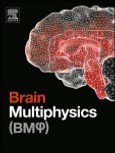
R. Bazala, G. Zoppellaro and G. Kletetschka, "Iron level changes in the brain with neurodegenerative disease," BRAIN MULTIPHYSICS, vol. 4, pp. 100063, 2023.
DOI: 10.1016/j.brain.2023.100063, IF = 3.370
Abstract: Nanosized magnetite inside ferritin may control the progression of neurodegenerative disease (ND) by creating an electronic noise in the neural cells. We discovered that brains with ND have a unique electron paramagnetic resonance (EPR) spectrum. Our measurements showed that the collapse of the broad ferritin maximum contained in the EPR spectra possibly relates to the onset and progression of the ND. Ferritin malfunction triggers the perturbation of iron concentration that either increases or decreases over the normal levels in brain without ND. This supports a conjecture that accumulated iron results in an increased volume of magnetite crystals, whose fluctuated magnetic moments may interfere with the normal function of neural synapses and contribute to the neurodegenerative disease. The mechanism of the iron mobility relates to iron canals in the neural cell's membrane by which the iron enters and leaves the neural cells. This gate keeper malfunction may relate to a speculation that this is due to the appearance of 2Fe-2S in EPR spectra of brains with ND.
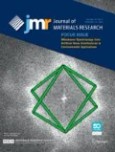
E. Kuzmann, K. Nomura, S. Stichleutner, A. Nakanishi, J. Pechousek, L. Machala, Z. Homonnay, R. Vondrasek, V. A. Skuratov, L. Krupa, O. Malina, T. Ingr and S. Kubuki, "Swift heavy ion irradiation-induced amorphous iron and Fe–Si oxide phases in metallic 57Fe layer vacuum deposited on surface of SiO2/Si," JOURNAL OF MATERIALS RESEARCH, vol. 38, iss. 4., pp. 1061-1073, 2023.
DOI: 10.1557/s43578-022-00767-z, IF = 2.909
Abstract: 57Fe conversion electron Mössbauer (CEM) spectroscopy, SEM and magnetization measurements were used to study the effect of swift heavy ion irradiation on metallic 57Fe (10 nm) thin layer vacuum deposited onto SiO2/Si. About 85% of the total iron content of the surface layer detected by CEM was present as metallic, crystalline alpha iron before the irradiation, while upon irradiation with 160 MeV Xe ions, with a fluence of 5 × 1013 ion cm−2, ~ 21% was converted to amorphous iron and ~ 47% to silicon-containing iron oxide phases. The presence of pure iron in the amorphous state was evidenced by CEM in agreement with magnetization measurements. Temperature dependence of CEM measurements and the FC/ZFC curves of the irradiated deposit indicated superparamagnetic nature of the iron-silicon-oxide phases. The results are discussed in terms of the thermal spike model for the formation of the amorphous iron phase that can be essential for the formation of silicon-iron-oxides.

J. Navrátil, R. Langer, M. Otyepka, T. Susi and P. Błoński, "Graphene-Supported Atom-Sized Magnets for Data Storage: What Can We Learn from First-Principles Calculations?," 2023 IEEE INTERNATIONAL MAGNETIC CONFERENCE - SHORT PAPERS (INTERMAG SHORT PAPERS), 2023.
DOI: 10.1109/intermagshortpapers58606.2023.10228258, IF = 1.520
Abstract: Doping the graphene lattice with transition metal (TM) atoms has been identified as an effective strategy for obtaining high magnetic anisotropy energy (MAE), preventing thermally induced reorientation of magnetic moments between the easy and hard magnetization axes. Lattice imperfections such as atomic vacancies can anchor TM atoms or their clusters, preventing them from diffusing and agglomerating on the surface, ultimately allowing high MAEs of 170 meV for an OsPd dimer bound to a single nitrogen-decorated vacancy (NSV) in the graphene lattice. Importantly, the lighter TM dimers, FeMn bound to two separate double-vacancy (DV) defects, can also exhibit a significant MAE of 120 meV when interacting with each other through the graphene lattice. The presence of Mn impurities associated with DV defects in the graphene lattice has been confirmed experimentally and can form anchors for the formation of FeMn dimers. For practical applications of graphene-supported magnetic dimers, the carbon sheet must be deposited on a solid support. A properly selected substrate can, to a large extent, allow for the preservation of a large MAE of dimers.


